WHEN WILL EVS TAKE OVER THE WORLD?
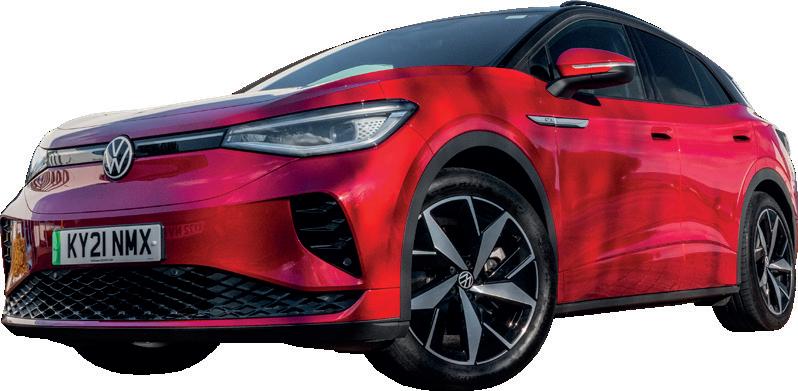
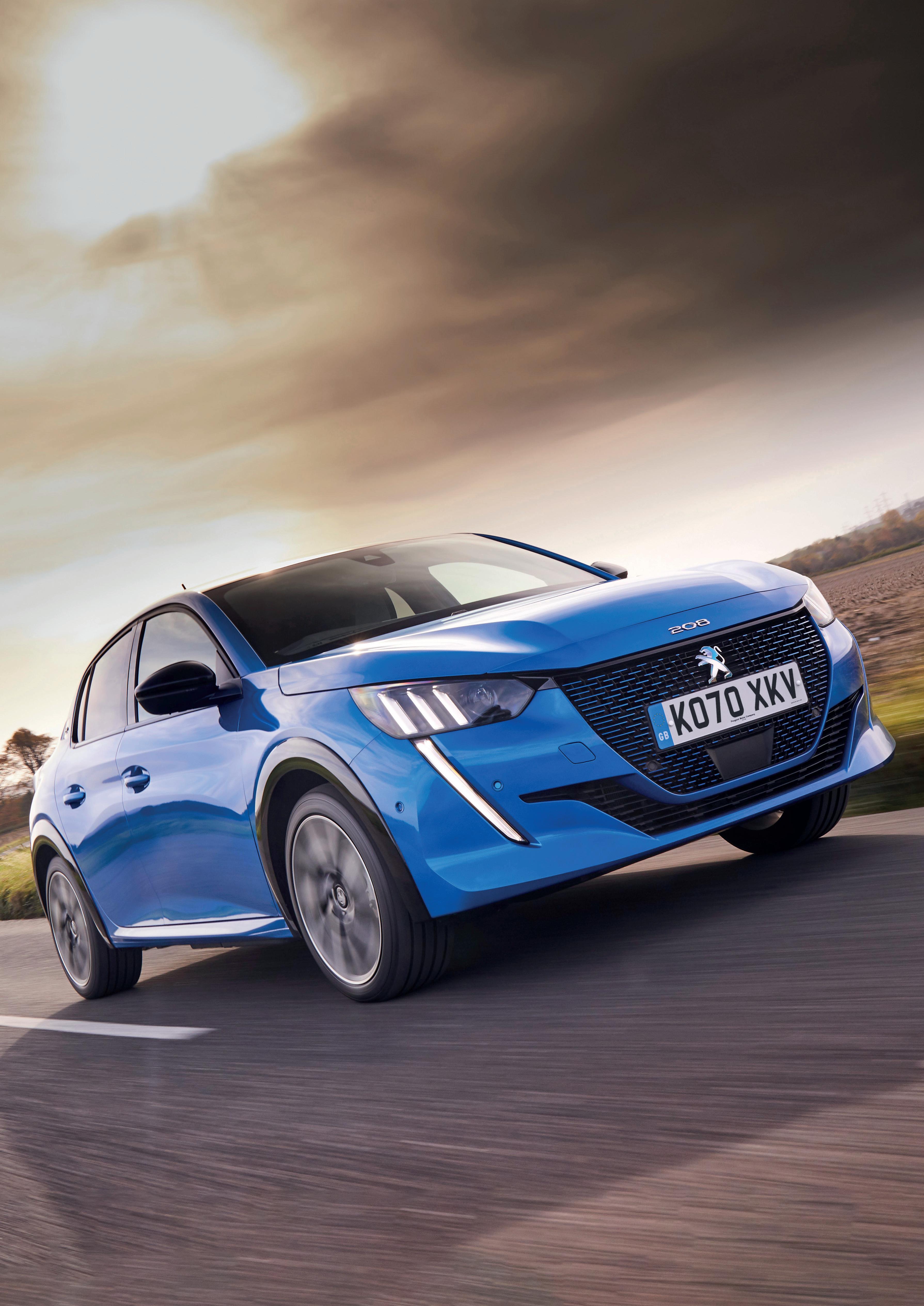
The ten countries that will transition to EVs first!

NEWS • REVIEWS • INTERVIEWS • ELECTRIC CARS • ELECTRIC SCOOTERS • E BIKES
&
APRIL 2023 FREE
+ IT’S
BATTLE
THE
BETWEEN THE VOLKSWAGENS
More and more businesses are using smart meters to help them feel more in control of their budgeting.





Smart meters send gas and electricity readings straight to their supplier. So rather than estimates, Frank here knows he’ll receive accurate energy bills. And that means he’ll know exactly how much he’s spending each month. Search ‘get a smart meter’ today.

Eligibility may vary. ALBERT EINSTEIN rights licensed by The H.U.J./Greenlight. S S SS S S S S S S S S S S S S S S S SS S S S S S S S S S S S S S S S S SS S S S S S S S S S S S S S S S S S SS S S S S S S S S S S S S S S S S S S S S S S S S S S S SS S S S S S S S S S S S S S S S SS S S S S S S S S S S S S S SS S S S S S S S S S S S SS S S S S S S S S S S SS S S S S S S S S S SS S S S S S S S SS S S S S S S S S S S S S S S S SS S S S S S S S S S S S S S S SS S S S S S S S S S S S S SS S S S S S S S S S S S S S SS S S SS S S S S S S S S S S S SS S S S S S S S S S S S S S S S SS S S S S S S S S S S S S S S S S S SS S S S S S S S S S S S S SS S S S S S S S S S SS S S S S S S S S S S S SS S S S S S S S S S S S S SS S S S S S S S S S S S S S SS S S S S S S S S S S S S SS S S S S S S S S S SS S S S S S S S S S S SS S S S S S S S S S S S S S S SS S S S S S S S S S S S S S SS S S S S S S S S S S SS S S S S S S S S S S S SS S S S S S S S S S S S S S S S SS S S S S S S S S S S S S S S S SS S S S S S S S S S S S S S S S SS S S S S S S S S S S S SS S S S S S S S S S S SS S S S S S S S S SS S S S S S S S S S S S S S SS S S S S S S S S S S S S S S SS S S S S S S S S S S S S S SS S S S S S S S S S S S S S SS S S S S S S S S S S S S S SS S S S S S S S S S S S S S S SS S S S S S S S S S S S S S SS S S S S S S S S S S S S S SS S S S S S S S S S S S S S S SS S S S S S S S S S S S S S S SS S S S S S S S SS S S S S S S S S S S S S S S S S SS S S S S S S S S S S S S S S S S S SS S S S S S S S S S S S S S S SS S S S S S S S S S S S S SS S S S S S S S S S S S S S S SS S S S S S S S S S S S S S S SS S S S S S S S S S S S S S S SS S S S S S S S S S S S S S S S S SS S S S S S S S S S S S S S S S S S SS S S S S S S S S S S S S S S S S S S SS S S S S S S SS S S S S S S S S S S S S SS S S S S S S S S S S S SS S S S S S S S S S SS S S S S S S S S S S SS S S S S S S S S S S S S S S S S S SS S S S S S S S S S S S S S S S S SS S S S S S S S S S S S S S S SS S S S S S S S S S S S S SS S S S S S S S S S S S SS S S S S S S S S S S S S SS S S S S SS S S S S S S S S S S S S S SS S S S S S S S S S S S S S S S SS S S S S S S S S S S S S S S S SS S S S S S S S S S S S S S SS S S S S S S S S S S SS S S S S S S S S S S SS S S S S S S S S S S S SS S S S S S S S S S S S S S SS S S S S S S S S S S S S S S S SS S S S S S S S S S S S S S S S S S S S S S S S S S SS S S S S S S S S S S S S S S S SS S S S S S S S S S S S S S S SS S S S S S S S S S S S S S SS S S S S S S S S S S S S S SS S S S S S S S S S S S S S S S S SS S S S S S S S S S S S S S S S S SS S S S S S S S S S S S S S S S SS S S S S S S S S S S S S S S S S SS S S S S S S S S S S S S S S SS S S S S S S S S S S SS S S S S S S S S S S S SS S S S S S S S S S S S S S SS S S S S S S S S S S S S SS S S S S S S S S S S S S S S SS S S S S S S S S S S S S S S S S SS S S S S S S S S S S S S S SS S S S S S S S S S S S S S SS S S S S S S S S S S S S S SS S S S S S S S S S S S S S SS S S S S S S S S S S S S SS S S S S S S S S S S S S S SS S S S S S S S S S S S S S S S S S S S S S S S S S S SS S S S S S S S S S S S S S S SS S S S S S S S S S S S S S S S S SS S S S S S S S S S S S S S S S S S SS S S S S S S S S S S S S S S S S S S S SS S S S S S S S S S S S S S S SS S S S S S S S S S S S S S S SS S S S S S S S S S S S S S S SS S S S S S S S S S S S S S S SS S S S S S S S S S S S S S S S S SS S S S S S S S S S S S S S S S S S SS S S S S S S S S S S S S S S S S S SS S S S S S S S S S S S S S S S S SS S S S S S S S S S S S S S S SS S S S S S S S S S S S S S SS S S S S S S S S S S S SS S S S S S S S S S S S S SS S S S S S S S S S S S S S S S S S SS S S S S S S S S S S S S S S S S S SS S S S S S S S S S S S S S S S S S SS S S S S S S S S S S S S S S SS S S S S S S S S S S S S S SS S S S S S S S S S S S SS S S S S S S S S S S SS S S S S S S S S S S SS S S S S S S S S S S SS S S S S S S S S S S S S S SS S S S S S S S S S S S S S S SS S S S S S S S S S S S S S S S S S S S SS S S S S S S S S S S S SS S S S S S S S S S S SS S S S S S S S S S S SS S S S S S S S S S S S SS S S S S S S S S S S S S S SS S S S S S S S S S S S S S S SS S S S S S S S S S S S S S S S S SS S S S S S S S S S S S S S S S S S SS S S S S S S S S S S S S S S S SS S S S S S S S S S S S S S S S SS S S S S S S S S S S S S S S SS S S S S S S S S S S SS S S S S S S SS S S S S S S S S S S S S S S SS S S S S S S S S S S S S S S S S SS S S S S S S S S S S S S S S S S S SS S S S S S S S S S S S S S S S SS S S S S S S S S S S S S S S S SS S S S S S S S S S S S S S S S SS S S S S S S S S S S S S S SS S S S S S S S S S S S S S SS S S S S S S S S S S S S S SS S S S S S S S S S S S S S SS S S S S S S S S S S S S SS S S S S S S S S S S S SS S S S S S S S S SS S S S S S S S S S S S S S S S SS S S S S S S S S S S S S S SS S S S S S S S S S S S S S SS S S S S S S S S S S S S S SS S S S S S S S S S S S S S SS S S S S S S S S S S S S SS S S S S S S S S S S S S S SS S S S S S S S S S S S S S S S SS S S S S S S S S S S S S S S SS S S S S S S S S S S S S S S SS S S S S S S S S S S S S S S S S SS S S S S S S S S S S S S S S S SS S S S S S S S S S S S SS S S S S S S S S S S S S SS S S S S S S S S S S S S S SS S S S S S S S S S S S S S S S SS S S S S S S S S S S S S S S SS S S S S S S S S S S S S S S SS S S S S S S S S S S S S S S S S SS S S S S S S S S S S S S S S S S S SS S S S S S S S S S S S S S S S S S SS S S S S S S S S S S S S S S S S SS S S S S S S S S S S S S S S S SS S S S S S S S S S S S S S SS S S S S S S S S S SS S S S S S S SS S S S S S S S S S S S S S S S S SS S S S S S S S S S S S S S S S S SS S S S S S S S S S S S S S S S S S SS S S S S S S S S S S S S S S S S SS S S S S S S S S S S S S S S S SS S S S S S S S S S S S S S S SS S S S S S S S S S S S SS S S S S S S S S S S SS S S S S S S S S S S SS S S S S S S S S S S S SS S S S S S S S S S S S S SS S S S S S S S S S S SS S S S S S S S S S S S S S SS S S S S S S S S S S S S S S SS S S S S S S S S S S S SS S S S S S S S S S S SS S S S S S S S S S S SS S S S S S S S S S S S SS S S S S S S S S S S S S SS S S S S S S S S S S S S S SS S S S S S S S S S S S S S S S S SS S S S S S S S S S S S S S S S S S SS S S S S S S S S S S S S S S S SS S S S S S S S S S S S S S S S SS S S S S S S S S S S S S SS S S S S S S S S S S S SS S S S S S S S S S S S S SS S S S S S S S S S S S S S SS S S S S S S S S S S S S S S S S SS S S S S S S S S S S S S S S S S S SS S S S S S S S S S S S S S S S SS S S S S S S S S S S S S S S S SS S S S S S S S S S S S S S S S SS S S S S S S S S S S S S S SS S S S S S S S S S S S S S SS S S S S S S S S S S S S S SS S S S S S S S S S S S S S SS S S S S S S S S S S S SS S S S S S S S S S S S S S SS S S S S S S S S S S S S S S S SS S S S S S S S S S S S S S S S SS S S S S S S S S S S S S S SS S S S S S S S S S S S S S SS S S S S S S S S S S S S S SS S S S S S S S S S S S S S SS S S S S S S S S S S S S S SS S S S S S S S S S S S S S SS S S S S S S S S S S S S S S S SS S S S S S S S S S S S S S S SS S S S S S S S S S S S S S S SS S S S S S S S S S S S S S S S S SS S S S S S S S S S S S S S S S SS S S S S S S S S S S S S S SS S S S S S S S S S S S S S SS S S S S S S S S S S S S S SS S S S S S S S S S S S S S S S SS S S S S S S S S S S S S S S SS S S S S S S S S S S S S S S SS S S S S S S S S S S S S S S S S SS S S S S S S S S S S S S S S S S SS S S S S S S S S S S S S S S S S S SS S S S S S S S S S S S S S S SS S S S S S S S S S S S SS S S S S SS S S SS S S S S S S S S S S S S S S SS S S S S S S S S S S S S S S S SS S S S S S S S S S S S S S S S S SS S S S S S S S S S S S S S S S S S SS S S S S S S S S S S S S S S S SS S S S S S S S S S S S S SS S S S S S S SS S S SS SS S S SS S S S S S S S S S S S S S SS S S S S S S S SS S S S SS SS Accurate energy bills for your business That’s smart S
Like father, like son EDITOR’S NOTE
EV adoption is growing, not just in the UK but globally, and so in our ‘Top Ten’ feature for this month, we look at the countries that are set to transition over to electric vehicles first. In this special feature on page 27, Hippo Leasing analyses the countries with the most passenger car sales to predict when EV sales will overtake ICE, and some of the results might surprise you...
In our ‘EV Powered Interview’ feature this month, we have David Martell, the founder of home-charging brand EVIOS and the founder of Chargemaster. In this interview, David talks about the growth of EVIOS and Andersen EV, which was acquired by EVIOS last year, as well as the role of home charging in the UK’s transition to EVs. Having been involved in both sides of the industry, we also ask David if there is too much emphasis on the role of public charging infrastructure, and what the future of EV home charging could look like. Head over to page 7 to see what he has to say.


Without doubt, my highlight for this month has got to be putting my dad behind the wheel of an electric vehicle for the first time to see if I could finally convert him over to an EV. It is easily the funniest (and most chaotic video) I’ve filmed for EV Powered, and it’s been great to hear so much positive feedback on it – Even if my dad now thinks he should have my job!
Without spoiling the video, it is hard proof that the majority of people can be converted over to electric vehicles if they just get in and drive one. There is so much misinformation out there about EVs - whether it be about range, charging, running costs, or anything else – that some people, including my dad, can be completely put off the idea of switching to an electric vehicle without having ever driven one. But, as my dad found out, as soon as you get behind the wheel, those worries disappear. After the test drive, my dad admits that he will be considering an EV when the time comes to change his car, and if we can get more and more people to just simply try an electric vehicle, then I have no doubt that we will see sales of EVs skyrocket.
Elsewhere in this issue, I compare the Volkswagen ID.4 GTX against the Volkswagen ID.5 to see which one is better, and we also have a roundup of some of the latest releases and upcoming electric vehicles. As always, we have our electric motorsport coverage, e-bike content and news, reviews and opinions!
Editor
Charlie Atkinson
Associate Editor

Cherry Martin
Graphic Designer
Grace Moseley
Videographer
Jacob Pinchbeck
Content Sales Manager




Laura Phillips
Capital Business Media,
3 EV POWERED MAGAZINE
There’s much more inside, so enjoy the read!
Charlie Atkinson Editor, EV Powered
The EV Powered Team
EV Powered is published in London by © EV Powered Ltd a Capital Business Media group brand. EV Powered is printed using sustainable paper sources and vegetable ink, and is PEFC certified. Copies are recycled at the end of each month. Capital Business Media Ltd, Level 18, 40th Floor, London, E14 5NR. Tel: 020 7148 3861
Group MD Richard Alvin Business Development Director Stephen Banks Chief Creative Director Stuart Hyde Finance Director Andrew Martin
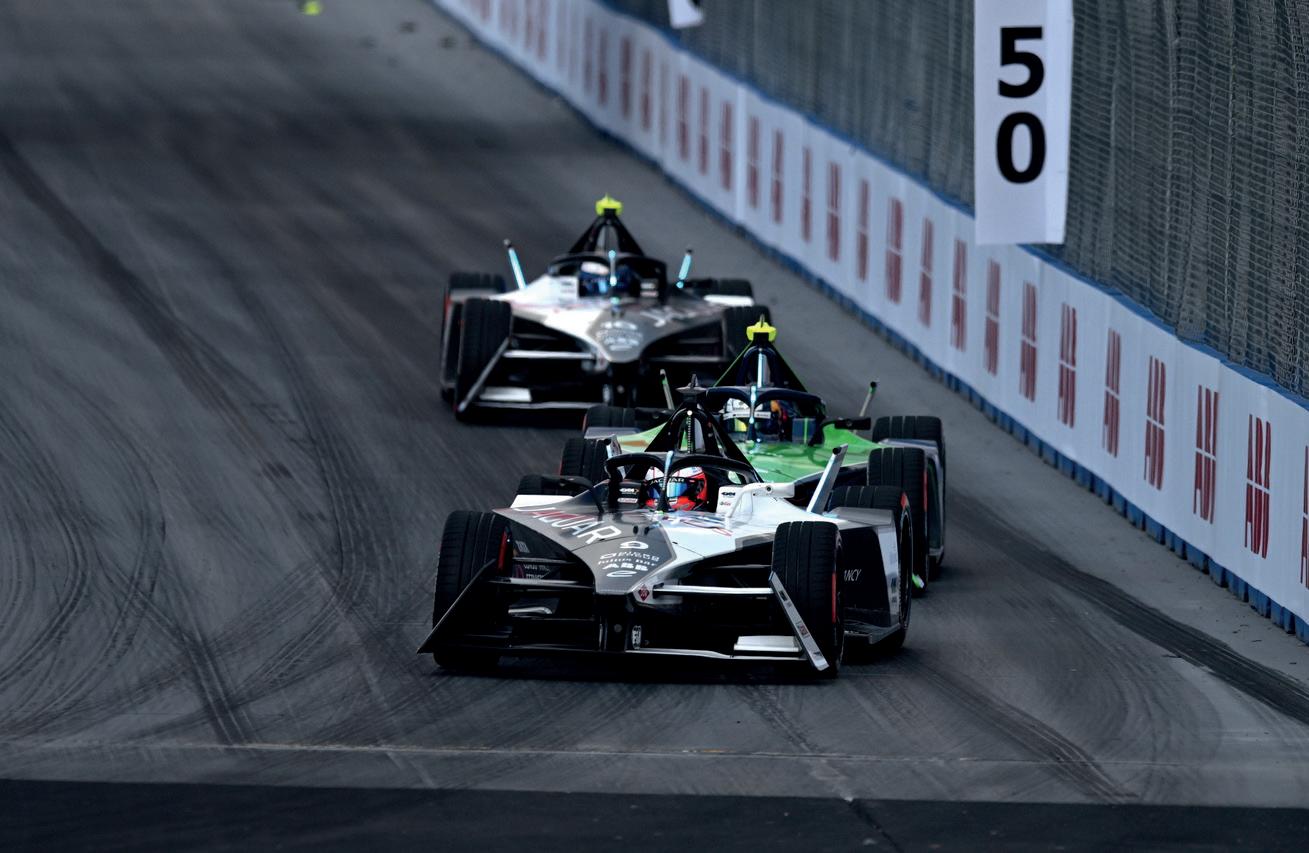



Contents 14 5 8 There’s No Place Like Home An exclusive interview with David Martell, Founder EVIOS. 14 Formula E Mitch Evans lands first win of Season 9 in São Paulo. ELECTRIC HOME 16 Extreme E Race for the planet heats up in Desert X-Prix. 18 Volkswagen ID. Volkswagen ID.4 GTX vs Volkswagen ID.5. 22 What’s New? A monthly round-up of all the latest releases and upcoming EVs! EV News The latest from the EV industry. 24 24 First Drive Can we convert on old-school petrolhead to EVs? 16 18 28 When Will Electric Vehicles Take Over? The ten countries that will transition to EVs first. 34 Audi Gears Up To Go Off-Road Audi reveals electric mountain bike powered by Fantic PAGES 37 - 52 EV POWERED MAGAZINE 4 35 More Government Support Needed... ...to accelerate electric truck adoption.
Government to turbocharge EV charging rollout with £400 MILLION investment
The Department for Transport has committed nearly £400 million to accelerate electric vehicle charging infrastructure rollout across England.
The measures will support the shift to electric vehicles (EVs), as well as the production of sustainable aviation fuel in the UK – continuing the country’s transition towards net zero.
The government has launched the £381 million Local Electric Vehicle Infrastructure (LEVI) fund alongside an additional £15 million for the OnStreet Residential Charging Scheme (ORCS). Taken together, the funding will aim to support the installation of tens of thousands of new chargers across the country, increasing EV infrastructure in every area and ensuring the UK’s charging network can support the increasing number of EV drivers and those considering the switch.
The government has also unveiled its proposals for a zero emission vehicle mandate which, from
next year, will set minimum annual targets for the percentage of new car and van sales that must be zero emission.
The plans support the government’s commitment to end the sale of new petrol and diesel cars and vans by 2030, and from 2035 all new cars and vans must be fully zero emission at the exhaust. Between 2030 and 2034, all new vehicles must be either fully zero emission or be able to drive a significant distance with zero emissions.
The final proposals are being jointly consulted upon by the UK government, alongside Scotland, Wales and Northern Ireland, and are the single largest carbon saving measure identified in the government’s Net Zero Strategy.
The new measures will aim to support the wide range of manufacturers in the sector by giving them flexibility through a credits-based trading
system, enabling them to bank credits in years when they exceed annual targets for use in future years or trade them with other manufacturers that have fallen short. If manufacturers do not meet their yearly targets, they could face possible fines of up to £18,000 for every vehicle they miss their target by.
Technology and Decarbonisation Minister Jesse Norman said: “As this announcements show, the government is doing more than ever to help the UK move away from petrol and diesel and towards electric vehicles.
“That means investing in charging infrastructure and giving a clear direction to manufacturers, so they can roll out new electric vehicles faster and more efficiently. Overall, the UK is leading the way in decarbonising transport, a sector that is one of the biggest contributors to greenhouse gases.”

5 EV NEWS
Number of ULTRA-RAPID CHARGING DEVICES up 82% since last year

EV charging statistics from Zap-Map show that there are now more than 38,000 public charging devices in the UK, with 38,982 total charging devices across the country at the end of February.
Key segments of the UK’s charging infrastructure continue to show impressive growth, such as ultrarapid charging devices, which have seen an 82% increase since February last year. The latest EV charging statistics from Zap-Map show that 1,250 new charging devices were installed across the country last month. This brings the UK total to 38,982 devices, across 23,066
locations. It also represents a 33% increase in the number of charging devices since February 2022.
Furthermore, February saw 377 new rapid and ultra-rapid charging devices installed, bringing the total to 7,426. This includes an increase of 82% in the number of ultra-rapid devices – capable of adding from 70 miles in as little as 15 minutes – since February last year.
BP PULSE and APCOA to build EV hubs across Europe
bp pulse and APCOA have signed a strategic pan-European frame agreement to open more than 100 EV fast charging hubs across Europe.
Under the agreement, bp pulse plans to install ultra-fast charging at APCOA car parks – ‘Urban Hubs’ – in Germany, Austria, Belgium, Luxembourg, The Netherlands, Poland and the UK over the next three years to help expand its charging network in city centres and further accelerate urban e-mobility infrastructure throughout Europe.

The project is part of APCOA’s plans to transform its car parks into Urban Hubs which will provide physical and digital infrastructure for mobility, logistics, e-charging and technology-based services.
Two Urban Hubs in Berlin and Bremen in Germany are expected to open in the third quarter of 2023. These will be the first locations to offer ultra-fast charging which can charge a minimum of six cars, 24 hours a day, 7 days a week and will be operated by Aral pulse, bp’s German brand.
Stefan von Dobschuetz, general manager Europe, bp pulse, said: “This agreement will help us to build our EV charging network across Europe by offering customers t he fastest and most convenient EV hub charging experience. By working with APCOA, we’re bringing the future of parking, charging and services for urban life in one place.”
EV NEWS 6
CONNECTED KERB to install 10,000 EV chargers across Surrey by 2030
Connected Kerb has announced plans to install 10,000 electric vehicle charging points across Surrey by 2030.
The rollout, which is the largest deployment of EV chargers by a UK local authority, will see charge points installed at over 1,500 locations across streets and public car parks in Surrey to accelerate EV uptake in the area. The contract will release up to £60 million of investment from Connected Kerb to install public EV charging points both on-street and in public car parks. At present, there is one charger per 9,000 residents in Surrey, but the rollout will see this figure dramatically increase. The partnership expects to deliver over 5,000 fast charging points by 2027,

including over 500 rapid charging points across the county.
Chris Pateman-Jones, CEO of Connected Kerb, said: “If one local authority can deliver such a significant boost to the UK’s charging network, just imagine what we could achieve by 2030 if every city, county, and combined authority was empowered to do the same. The recent Net Zero Review was clear – local authorities can become the driving force behind the rollout of charging infrastructure across the country, and our partnership with Surrey County Council is case and point.”
LUNAZ confirms first electrified ASTON MARTIN DB6 bound for USA

The car, one of fewer than 1,800 made between 1965 and 1970, will be fully restored and upcycled at the Lunaz research and production facility at Silverstone, UK. It is the latest in a series of commissions involving the electrification of cars from marques including Rolls-Royce, Bentley, Jaguar and Range Rover.
The car will be powered by Lunaz’ proprietary modular electric powertrain, developed entirely
in-house and comprised of the very highest standard European-sourced Tier 1 OEM battery cells and motors. All current Lunaz vehicles’ battery capacities range from 80-120 kWh, with a range between 180-250 miles. Every car by Lunaz is equipped with CCS fast-charging capability, too. The final tune of this particular DB6 will be undertaken in close collaboration with the client, however the Lunaz powertrain is capable of producing 375bhp and 516lb ft of torque.
Lunaz has confirmed the final configuration of its first fully electrified Aston Martin DB6 by Lunaz Design bound for the USA.
NEWS IN BRIEF
Ford has signalled a new era in its journey to electrification with the launch of the all new, fully-electric Explorer SUV.
myenergi and McMurtry Automotive have announced a strategic collaboration to share knowledge and showcase their industry-leading technologies.
EZ Charge has secured a major multimillion-pound investment to grow its market presence in the electric vehicle charging industry.
Octopus Electric Vehicles has signed a deal with Chinese electric car manufacturer BYD for the purchase of 5,000 EVs over the next three years.
Tesco’s Kirkwall superstore has become the 600th store in the UK to have EV charging points installed by Pod Point.
7 EV NEWS
THERE’S NO PLACE LIKE HOME

EVIOS 8 INTERVIEW AN
Back in 2008, David Martell revolutionized the electric vehicle industry when he created Chargemaster, the UK’s largest EV charging network.

Following BP’s acquisition of Chargemaster in 2018, David turned his attention to the home charging market as he launched EVIOS PLC, a premium EV home charging brand which also acquired Andersen EV in October last year. In this exclusive interview, David shares the story behind EVIOS and his plans for the future, whilst also discussing the role of home charging in the UK’s transition to EVs.
Continue onto next page

9 EVIOS INTERVIEW AN
HOME
DAVID MARTELL Founder EVIOS
We then had an opportunist twist to our journey in October. I noticed that Andersen EV had gone into administration. We knew Andersen well, in a product point of view - a high-end, attractive looking product with a choice of 96 different styles with a clever arrangement with the cable being hidden. We also knew they had existing arrangements with Jaguar Land Rover and Porsche. I thought it was an interesting opportunity so I phoned the administrator, put a bid in and by the following Tuesday we were told we were the preferred bidder, and a week later we had completed.
Do you have plans to target the destination charging sector?


We have plans to launch the EVIOS 2 which will be a workplace market product that will be for people who want to fit an intelligent charging point out-

What is the story behind EVIOS?
My journey started a long time ago. I was already involved in the motor industry, I started a company called Trafficmaster, which was one of the first telematics companies around and sold that out. In 2008, we recognised that EV’s were going to be one of the biggest changes in motor industry technology for 100 years and it was something that we felt we’d like to be interested in. Secondly, we felt that there were some business opportunities. In 2009, we started Chargemaster, and we started building charging points both for public use, for home use and for workplace use. That developed pretty quickly. We had a factory in Luton and grew over the following eight years to being the biggest manufacturer and operator of charging points in the UK. In 2018, we sold out to BP for £132,000,000 and I was asked to stay for three years running the company, because BP acknowledged that they didn’t know an awful lot about the EV market or the charging market. I found after 12 months that, to be quite honest, working for a multinational petrochemical company wasn’t my forte, and so I agreed with them that I would leave.
I went off and recognised that the EV market was only just starting. I’ve driven EV’s for ten years. I think I’ve done probably close to half a million miles, and I could see that there was still a very interesting business opportunity. As the technology was becoming more and more mainstream and as we move towards the situation in 2030 where all cars are going to have to have plugs on, I formed EVIOS PLC.
Some 70% of people charge their car purely at home. I’m not saying that public charging isn’t important, but I always make the point that running an EV is much more like charging your mobile phone than the conventional thing of going and queuing up at a petrol station and getting your hands dirty. If you can charge at home, it makes an awful lot of sense to charge at home. It was clear that it’s going to become more and more important to have an intelligent charging point that was easy to use and attractive to look at. That was our design brief. We looked at other players in the market and we thought we could do something better. We designed a unit with a colour screen, a PIN number so you could have multiple users. You can have multiple locations, a state-of-the-art app. We launched this in April last year, started shipping to customers last summer, and that’s gone very well and been very received.
EVIOS 10 INTERVIEW AN
DAVID FOUNDED CHARGEMASTER IN 2008 BEFORE THE COMPANY WAS SOLD TO BP
” “
In 2008, we recognised that EV’s were going to be one of the biggest changes in motor industry technology for 100 years and it was something that we felt we’d like to be interested in.
side their office or factory, and we’ve moved the launch of that back a few months because the acquisition of Andersen. One of our key focuses was to ensure that some of the potential shortcomings on some of the production processes of the Andersen unit were sorted out. That has been our focus and we’re delighted that we’ve already made a number of improvements that will ensure reliability is enhanced going forward. The EVIOS 2 will be coming out in due course, and I think the workplace market is important, but we do see the biggest growth in home charging. Currently, there’s something like 250-300,000 units a year sold and, when you think by the end of this decade there’s going to be close to 2,000,000 cars sold with plugs on, the markets going to grow at least five times in the next five or six years. We also plan to expand into Europe where we’ve got market opportunities
in places like Benelux, Germany, parts of Scandinavia and we’ve had inquiries, particularly for the Andersen product in other parts of the world.
Is there too much emphasis on the role of public charging infrastructure in the UK’s transition to electric vehicles?
There is a lot of discussion, particularly in the mainstream media, about there not being enough public charging, high-speed charging, and I personally feel that there’s too much emphasis on that. The average EV these days has a range of 200 miles plus, some with much more than that, and if you have 200 miles range, it’s very rare in a day that most people go more than that. If you’ve got off-street parking, and I appreciate that’s not

everybody, but 70% of people have got night-time parking, that’s by far the most cost-effective way to run your EV. The cost can be half the cost of high-speed charging. The cost saving of charging at home is huge. Increasingly, with nighttime rates and the use of solar, that becomes greater, so if you could run your car from electricity at home, you’ve got it much, much cheaper, and it’s much more convenient. People often ask me how long does it take to charge? And I say it takes me three minutes because I get home, I plug it in, I go in, have my tea and go to bed, and I come out in the morning and it’s charged. There is a role for highspeed charging, but it’s for emergency use only. I do typically 15,000 miles a year but in the last year I’ve only used high-speed charging twice.

11 EVIOS INTERVIEW AN
” “ Scan this QR code to listen to this episode of The Everything EV Podcast with David Martell
There is a lot of discussion, particularly in the mainstream media, about there not being enough public charging, high-speed charging, and I personally feel that there’s too much emphasis on that.

EVIOS 12 INTERVIEW AN
We do think the technology that we’ve got enables people to use their charging point more effectively, manage cost more effectively and to understand what it’s doing. ” “
What trends do you see coming into the EV home charging space?


Solar comes into play because if you’re not in a hurry - some people will have their car parked for two or three days - you can get a meaningful amount of energy from your solar panels and our units. Our technology enables you to take advantage of that and that is close to free energy, which is great if you could do that and if you’ve got battery storage as well. On my home installation, I’ve got an EVIOS unit with solar and a battery, so I can charge very cost effectively. One of the things that we’ve done with the EVIOS unit is try to make it very user friendly. We’ve got a database that shows the efficiency of each car and when we show the customer through the app how many miles they’ve added rather than how many kilowatt hours they’ve added, it’s really useful to be able to see that I’ve added 100 miles, 120 miles to their car and also what it’s cost. We do think the technology that we’ve got enables people to use their charging point more effectively, manage cost more effectively and to understand what it’s doing.
Inductive charging - It’s very nice. It’s a bit like charging your mobile phone inductively. A lot of people do that already, but it took probably ten years of mobile phones before there was any wireless charging. It’s got two challenges: it’s a bit chicken and egg. You’ve got to have the equipment on the car and you’ve got to have the infrastructure, and both are very expensive. We work with BMW who put it on the plug-in hybrid 5 Series with an option of having a wireless charging pad that you could have at home and it was very expensive. It’s nice that you get home at night, you go over the pad and you don’t have to get the plug out and you don’t have to plug it in, which is obviously very convenient. I think that evolution will come, maybe in a couple of years’ time, but EVIOS will be there.
What’s next for EVIOS and Andersen?
We’re very excited. We’ve got two great products, the EVIOS One and the Andersen A2 where we’ve got a product enhancement map for both of them and we’ll be moving into the workplace charging area. In the short term, we’ve got a number of new styles coming out on the Andersen unit. We’ve got a high-profile marketing campaign. Before we took Andersen over, they spent typically about £60,000 a year on marketing. We’re now spending one and a half times that every month. We’re not intending to go at the low end, the cheap and cheerful market. Clearly there’s a market, but we’re going for the style and the high capability unit, for the premium customer. If you buy a mid-range to upper-range car, when you order it you could typically spend several thousands of pounds on extras, like carbon fibre trim or different colours, different wheels, different audio systems, so we believe it’s going to be the norm for people to spend a little bit more money to have a charging point that is attractive to look at but also has features so they can save money on the running cost of their car.
13 EVIOS INTERVIEW AN
FORMULA E MITCH EVANS LANDS FIRST WIN OF SEASON
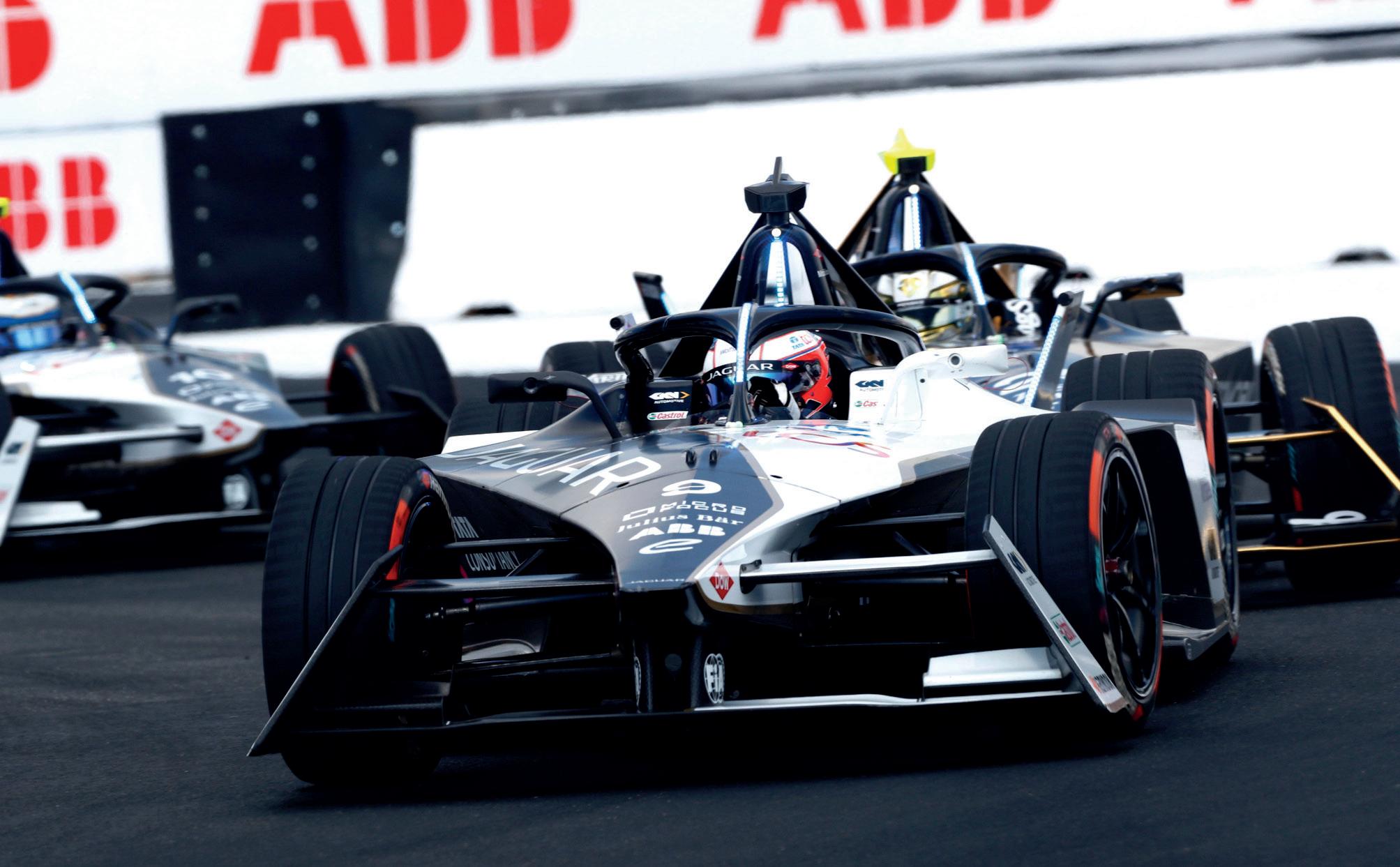
9 IN SÃO PAULO
Mitch Evans secured his first win of the season on the streets of São Paulo, with teammate Sam Bird also securing a double podium for Jaguar TCS Racing.

The result marked an extraordinary comeback for Jaguar, with both drivers and the manufacturer suffering a frustrating start to the season, which included Sam Bird taking himself and Evans out in the Hyderabad E-Prix, and Bird missing the Cape Town E-Prix following a crash in qualifying.
However, the stars aligned for the Jaguar powertrain in the inaugural São Paulo E-Prix, as Mitch Evans secured his first win of the season, with Sam Bird finishing in third, and Envision’s Nick Cassidy coming in second.
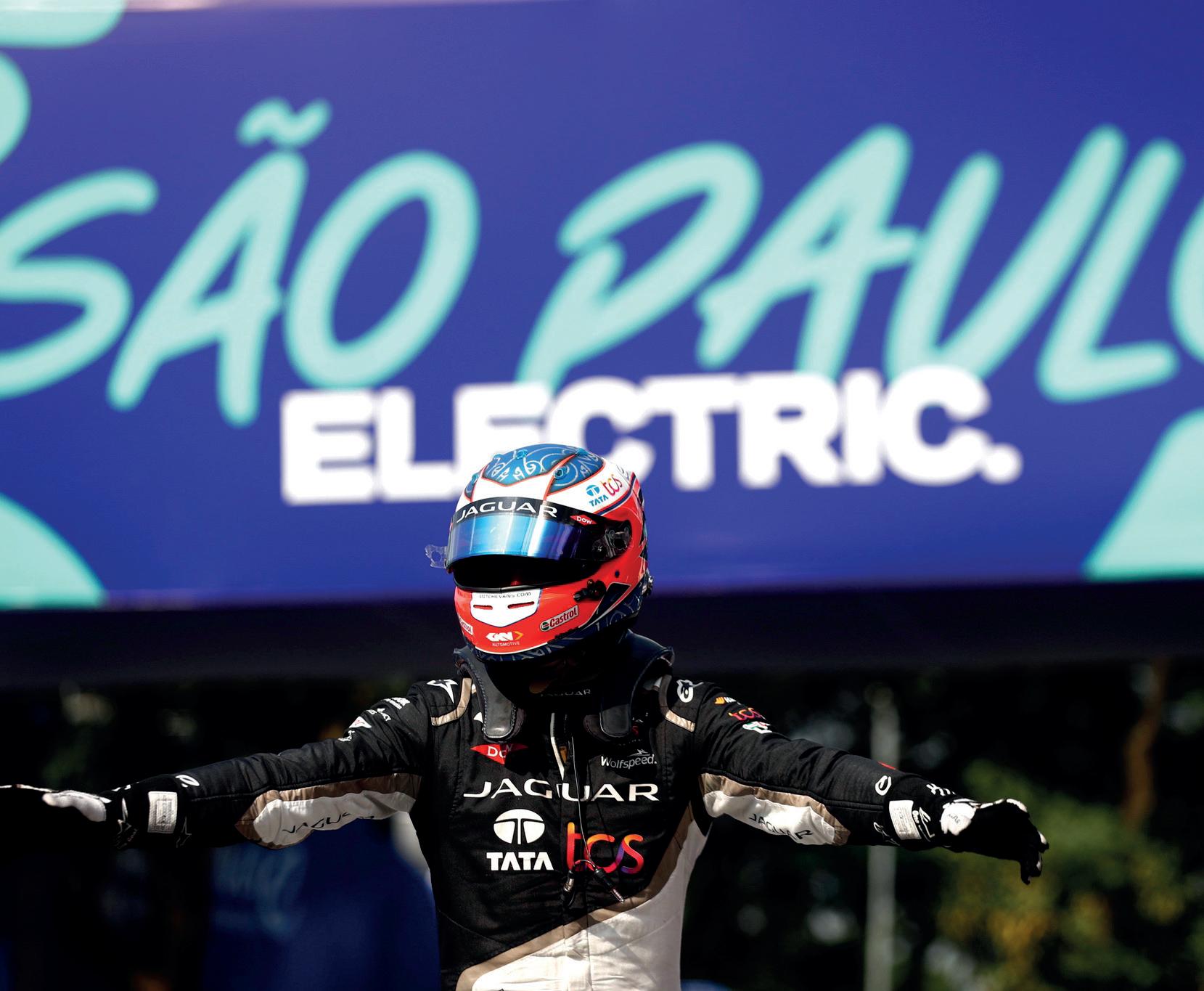
Evans managed to navigate a challenging 11-turn circuit to take the chequered flag first from third on the grid, stealing the lead from Cassidy as the race headed into four TAG Heuer Added Laps.

Porsche’s Antonio Felix da Costa just missed out on a third successive podium as the Portugese driver came in fourth, ahead of the DS Pesnke pairing of Jean-Éric Vergen and Stoffel Vandoorne.
Vandoorne had been leading da Costa for a large portion of the race, but as the Belgian struggled for energy towards the end of the race, which inevitably allowed da Costa to sneak through.
Da Costa’s teammate and standing’s leader Pascal Werhlein had arguably one of the most impressive drives of the day, securing seventh having started all the way back in 18th. McLaren’s Jake Hughes continued his impressive start to life in Formula E with another point scoring position. The British driver came in eighth, meaning he has scored points in all bar one race this year. His teammate, Rene Rast, came in ninth with Sebastien Buemi of Envision Racing rounding out the top ten.
Avalanche Andretti’s Jake Dennis endured another frustrating weekend, pulling out of the race
FORMULA E 14
following contact with NIO 333’s Dan Ticktum which forced him into Werhlein and ultimately cutting his race short. Despite his DNF, Dennis remains second in the Drivers’ Standings behind Porsche’s Pascal Werhlein. Envision’s Nick Cassidy jumps up to third in the standings following his third successive podium finish.
A double-header trip to Berlin is next up for Formula E on 22 & 23 April.

WHAT THE DRIVER’S SAID...

Mitch Evans, Jaguar TCS Racing: “This win has come at the perfect time, because we’ve had a tough start and the Jaguar has been quick. To finally get a victory is incredible - Nick pushed me all the way. This is all down to the hard work of the team, there’s a lot of graft that goes in, so much work into the strategy, to try and put it together is not easy so I’m super happy to get some big points on the board.”
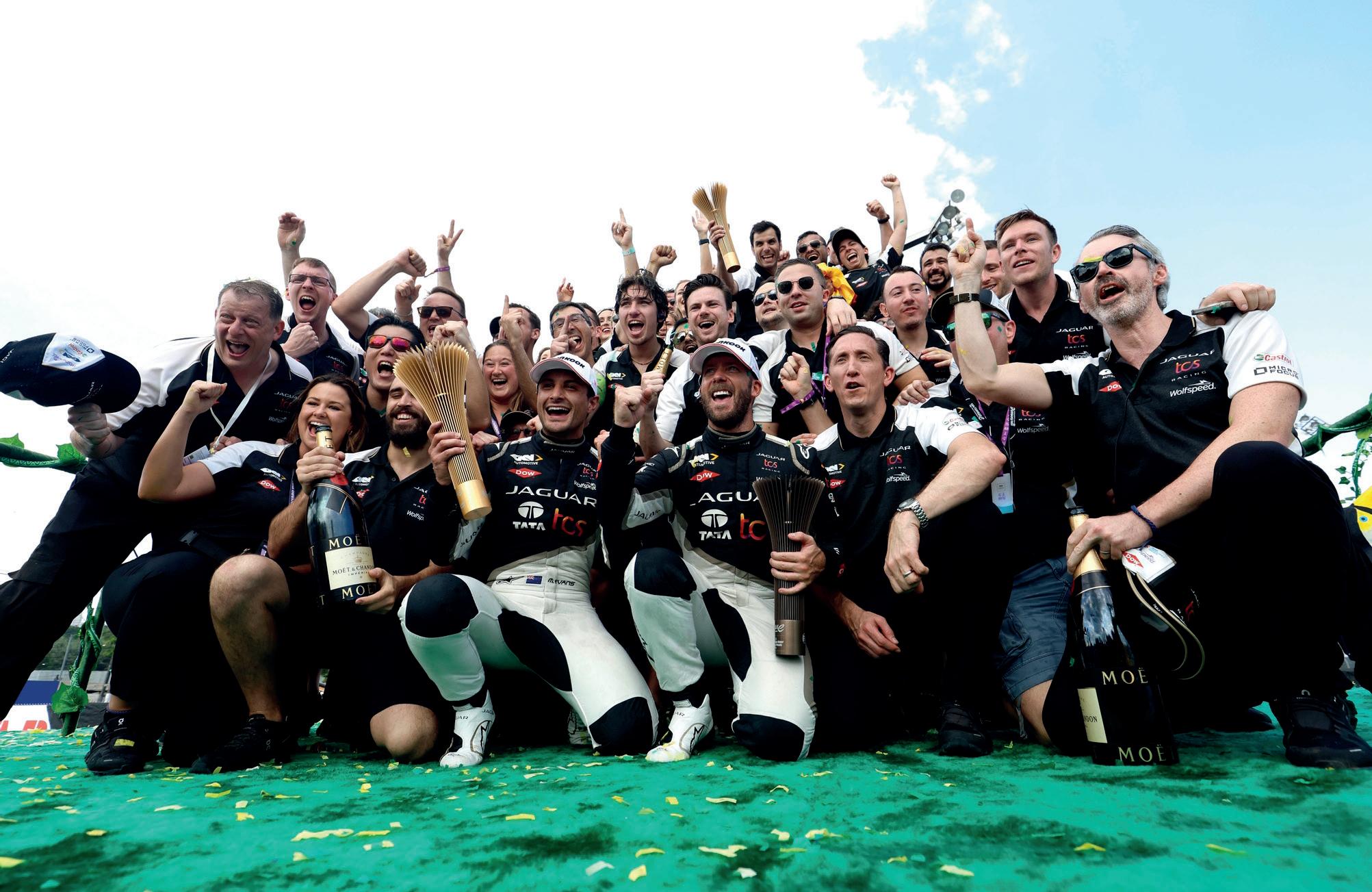
Sam Bird, Jaguar TCS Racing: “Amazing for Jaguar TCS Racing to get the podium locked out. Massive hats off to the team here and back at base, it’s a brilliant result. I got fastest lap too, it’s good points for the team and now we can look forward to Berlin.”
Nick Cassidy, Envision Racing Formula E: “Before the race I said that I would be super happy with a podium finish. That was Formula E at its best, so much fun from a driver’s point of view, and I hope it was a good watch for the fans. It was a pretty strategic race, and to finish with Jaguar-powered cars one, two and three is pretty cool. I knew to get the win I would have to do something pretty special to beat Mitch (Evans), but that would have been a big risk in terms of losing out and ending up third.”

SEASON 9 DRIVERS’ STANDINGS
15
FORMULA E
P. Wehlein TAG Heuer Porsche Formula E Team 86 PTS J. Dennis Avalanche Andretti Formula E 62 PTS N. Cassidy Envision Racing 61 PTS J. Vergne DS Penske 60 PTS A. Félix da Costa TAG Heuer Porsche Formula E Team 58 PTS S. Bird Jaguar TCS Racing 44 PTS S. Buemi Envision Racing 42 PTS R. Rast Neom McLaren Formula E Team 40 PTS M. Evans Jaguar TCS Racing 39 PTS J. Hughes Neom McLaren Formula E Team 32 PTS DRIVERS
1 2 3 4 5 6 7 8 9 10
TEAM
Unbelievable! It’s target practice out there and I’m the target. Completely smashed into which totalled my rear end. DNF. Can’t catch a break right now.
Adeus Brasil JAKE DENNIS @JakeDennis19 “
”
RACE FOR THE PLANET HEATS UP IN DESERT X-PRIX
Season 3 of Extreme E could be the closest yet as Veloce Racing and ACCIONA | SAINZ XE Team claimed their maiden Extreme E victories at the Desert X Prix in NEOM, Saudi Arabia last month.

With just one podium to their name in the first two seasons of Extreme E, Veloce Racing established themselves as early title contenders as the team topped the Extreme E standings at the end of the first X Prix double-header with a victory and a deserved second place from the weekend in Saudi.
Molly Taylor, Veloce Racing, said: “As weekends go it couldn’t have gone much better. Everyone in the team has done such a great job and I don’t think I have ever had so much fun along the way.
“A victory, a double podium and being inside the top two in every session is not easy to achieve, particularly in this championship, so we can all be delighted with the performance and look forward to the rest of the season.”
The pairing of Molly Taylor and Kevin Hansen made their debuts for Veloce Racing at the Season 2 finale in Punta del Este, Uruguay, where they became the first team outside of X44 Vida Carbon Racing and Rosberg X Racing (RXR) to finish as top Qualifier.

Kevin Hansen, Veloce Racing, said: “We have shown that we can lead from the front, but we can also go wheel-to-wheel for position, as both Molly and I have made up places during the weekend. Both of us believe so much in what the engineers and mechanics are doing, so we feel so safe when we get in the car. We believe in what we are going to drive, and I think that is also giving some results.
“We know we have the right package in place, and we look forward to taking this confidence to Scotland in May.”
MOLLY TAYLOR AND KEVIN HANSEN OF VELOCE RACING CELEBRATE WITH THEIR TROPHIES
Taylor added: “I’ve obviously been out of the car for a little while – so you need confidence in yourself that you can deliver. But the team have been so supportive and brilliant at bringing the best out of every aspect that we look into.
“Our Team Principal Luc [Alphand] knows what it takes to win. Having that faith in someone like that, who’s got the scores on the board, who knows what you’re feeling, and knows how to
translate that into results, I think that’s a real advantage for us.”
ACCIONA | SAINZ XE Team join Veloce Racing at the head of the Extreme E Season 3 standings with their debut win in Round 2 at the first X Prix of the year. Although a contender throughout their time in Extreme E, their maiden victory came in the second leg in NEOM, where Laia Sanz and new team-mate Mattias Ekström came out on top.
EXTREME E 16
Laia Sanz, ACCIONA | SAINZ XE Team, said:
“Finally! I think we did a great job. Not only this weekend, but these two years with Carlos [Sainz Snr.] and all the team. I think he really deserved this win and they deserve this win and I’m super happy also with Mattias [Ekström] who has helped me so much and played a huge part in the good results in Saudi Arabia.
“This victory is for all the people on the team because they truly deserve it for all the work we have done to be in this position, especially for Carlos. I learned so much with him as my teammate and it is fantastic that he is with us here, helping us and giving advice.
“Look how difficult it was to get to the Final that we won, though. For us, it was really close. We felt we were strong throughout but then you can see the other teams performing well and being strong – it will be a long season.
“We can feel proud, but we must keep up the good work. To win the championship we need to avoid big mistakes.”
Mattias Ekström, ACCIONA | SAINZ XE Team, said: “It’s always great to be racing and to be on the podium, but I think this one is a little

different. It was a late c-all for me to join the team, and I’m really happy that Carlos [Sainz Snr.] called me and trusted me to step in for him.
“During the weekend, when you are not driving, it can be difficult to keep looking at data and finding the motivation throughout the days to look for details. But Carlos can do the same thing five times and he never get bored. He can repeat, repeat, repeat – that’s so impressive and crucial to our performance as a team.
“We have had strong pace so far this season, though, with two very positive days of racing. We can be happy with a lot of things in this championship to date.”
Such strong weekends from the aforementioned debut winners have indicated just how competitive it will be in Season 3, and that X44 Vida Carbon Racing and RXR may not have it all their own way in their pursuit of a second Extreme E championship.
The pioneering series now looks towards its next race weekend in Scotland (13-14 May), which will be just as closely fought as the opening round in the desert of Saudi Arabia.



17 EXTREME E
MATTIAS EKSTROM AND LAIA SANZ OF ACCIONA | SAINZ XE TEAM CELEBRATE WITH CARLOS SAINZ ON THE PODIUM OF THE SEASON.”
FORWARD TO THE REST PERFORMANCE AND LOOK ALL BE DELIGHTED WITH THE CHAMPIONSHIP, SO WE CAN PARTICULARLY IN THIS EASY TO ACHIEVE, TWO IN EVERY SESSION IS NOT AND BEING INSIDE THE TOP “A VICTORY, A DOUBLE PODIUM
Volkswagen’s electrified ID. range consists of some of the best electric vehicles on the market, to the point where different models within the ID. lineup are competing against each other.
vs Volkswagen Volkswagen Which EV comes
By Charlie
The newer, sport ID.5 SUV coupé was released last year, almost exactly a year after the release of the top-of-the-range GTX version of Volkswagen’s first electric SUV.
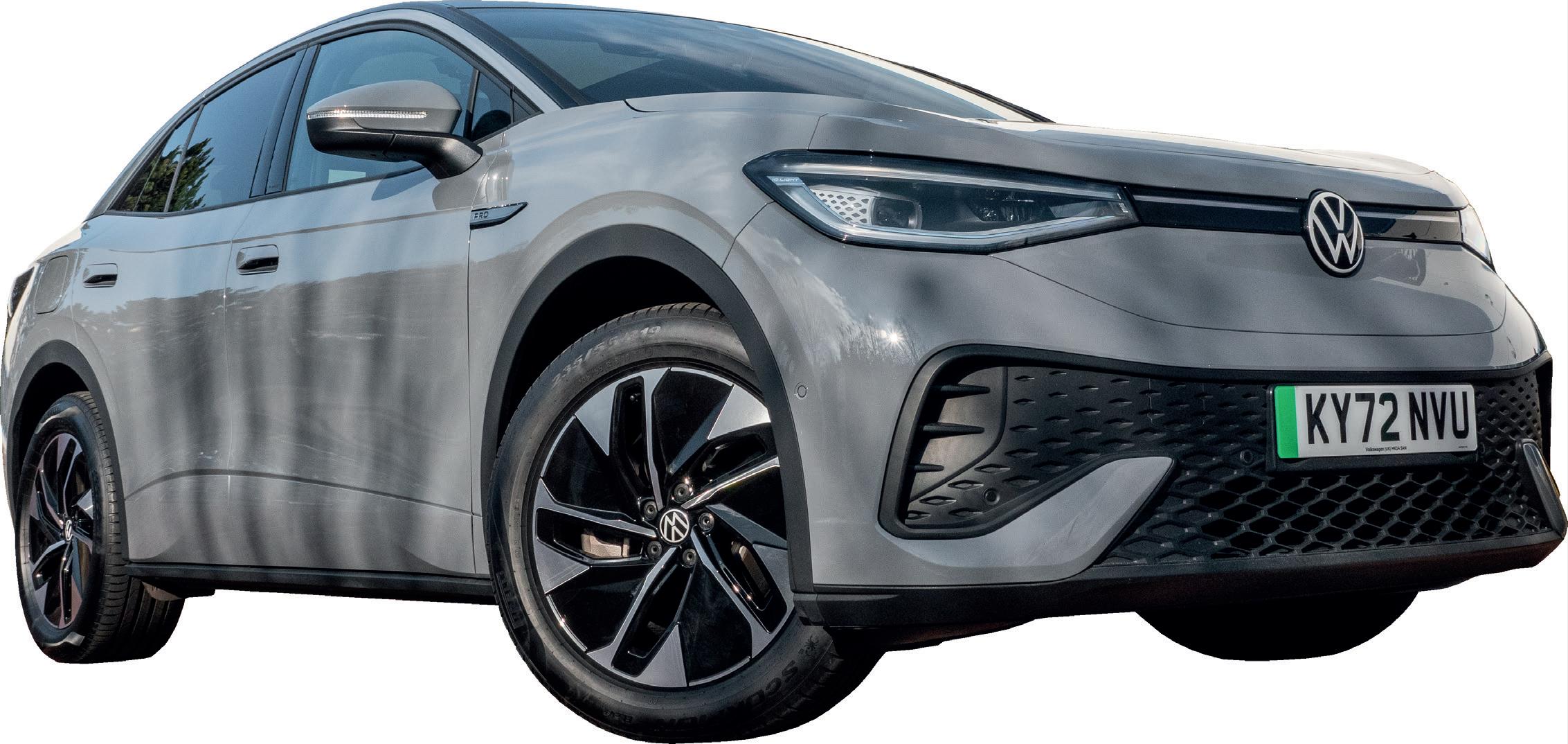
They have a similar design, a similar performance package, and they have a similar price tag, but which car comes out on top?
Volkswagen’s journey to electrification has been relatively successful so far. The manufacturer launched its first mainstream EV back in 2013 with the e-Golf, but its first dedicated electric vehicle came in 2019 with the ID.3.

The birth of the ID. range kickstarted Volkswagen’s acceleration towards e-mobility, and through its revolutionary modular electric drive matrix (MEB) platform, the brand has become one of the most significant players in the burgeoning EV market. You could make the point that Volkswagen has always been somewhat of a trendsetter in the electric vehicle industry – The ID.3 became one of the fastestselling electric vehicles after its release – and the ID.4 was one of the first electric SUVs on the market.
Looking to retain its position as one of the major players in the booming EV space, Volkswagen
VOLKSWAGEN ID. 18
vs Volkswagen ID.4 GTX Volkswagen ID.5
comes out on top?
Charlie Atkinson
pushed forward with its ACCELERATE strategy with the launch of the ID.5. This sporty SUV coupé became the sixth fully electric model to join the ID. family, featuring an “elegant aesthetic” and “sporty driving characteristics,” according to VW.
Despite being one of the most recent models on the ID. lineup, the description of the ID.5 in the VW press pack is remarkably similar to one of the ID.5’s predecessors. In the media file of the range-topping sporty ID.4 GTX, it is said to boast “sporty driving characteristics” and a “sportier aesthetic.”
The comparisons do not stop there, either. From design to performance to price, the standard ID.5 and the ID.4 GTX offer a similar package across the board, meaning Volkswagen has created stiff competition within its own lineup. But which model comes out on top in a head to head?
DESIGN

At first glance, there are no notable differences in design between the ID.5 and the ID.4 GTX. However, on closer inspection, you can see that the ID.5 has more character and presence to its aesthetic in comparison to the generally bland ID.4.
The ID.5’s muscular coupé design is accentuated with a dramatic rear-end which is much steeper than the square and boxy tailgate of the ID.4. The ID.5 also features a little spoiler, to give it an extra dose of sportiness, and the large wheels and sharp creases down the side give the car a great deal of muscle.
INTERIOR
There isn’t too much difference in terms of the interior, either. As is the case with most electric VW models, each vehicle features the standard ID. interior, with a laggy 10-inch touch display, drivers display and both models also included a panoramic sunroof, although this isn’t standard. The interior of both the ID.4 GTX and ID.5 is designed around the Open Space concept, which allows passengers to get in and out of the vehicle easily with good visibility, and there is plenty of space up front and in the rear seats on both cars.
There is not a great deal of difference up front – in fact, they are pretty much identical – and both cars feature the standard ID. styling, such as the fullwidth lightbar and the matrix LED headlights. Continue onto next page
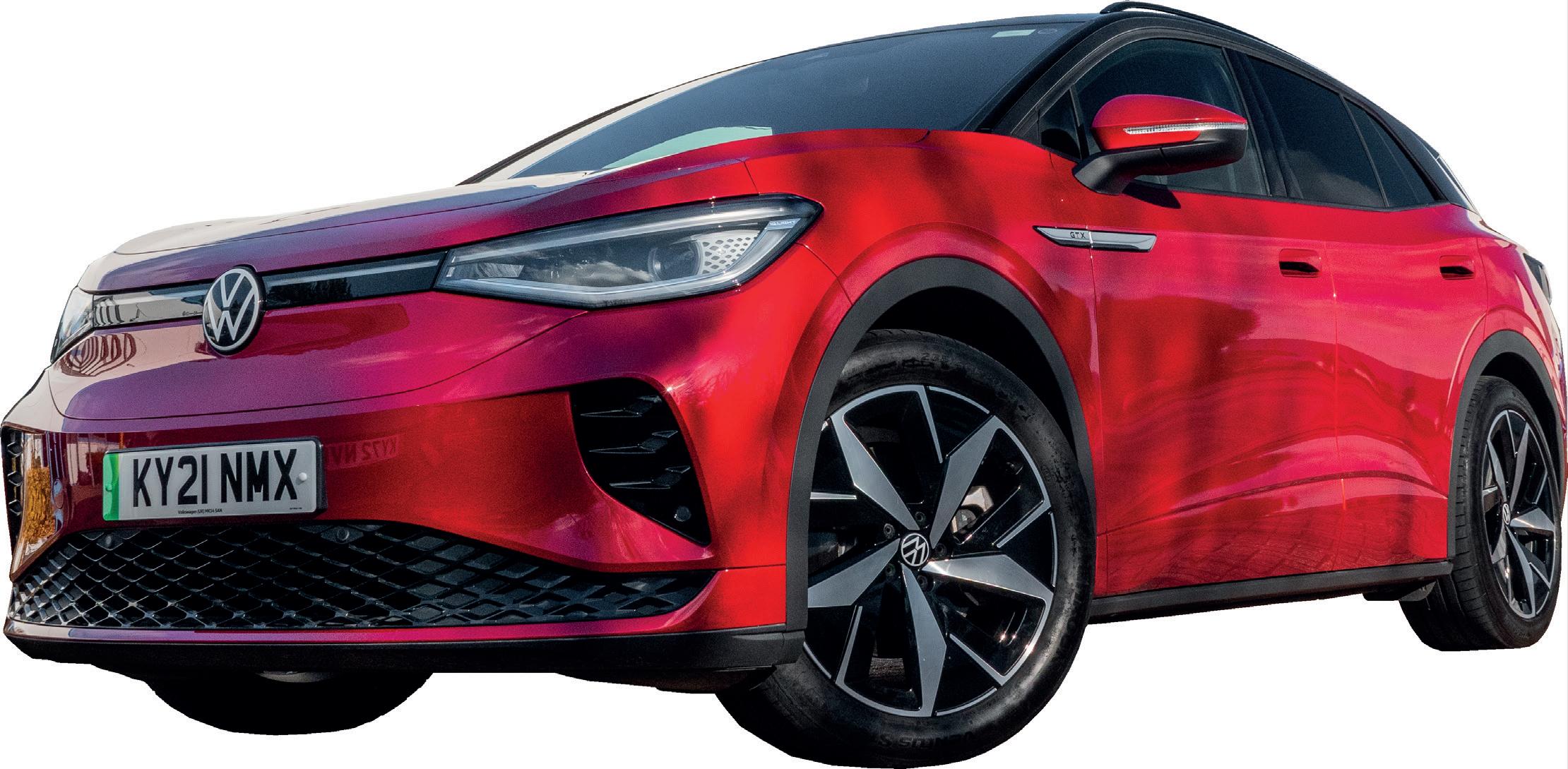
19 VOLKSWAGEN ID.
For the ID.4 GTX, the interior is fitted with sporty red seams across the fabric seat covers and along the dash. The seats, as well as the front sill panel trim and the steering wheel clip, also feature GTX lettering.
In terms of storage, the volume of the ID.5’s luggage compartment is 549 litres, making it slightly bigger than that of the ID.4, in spite of its sleek roof line.
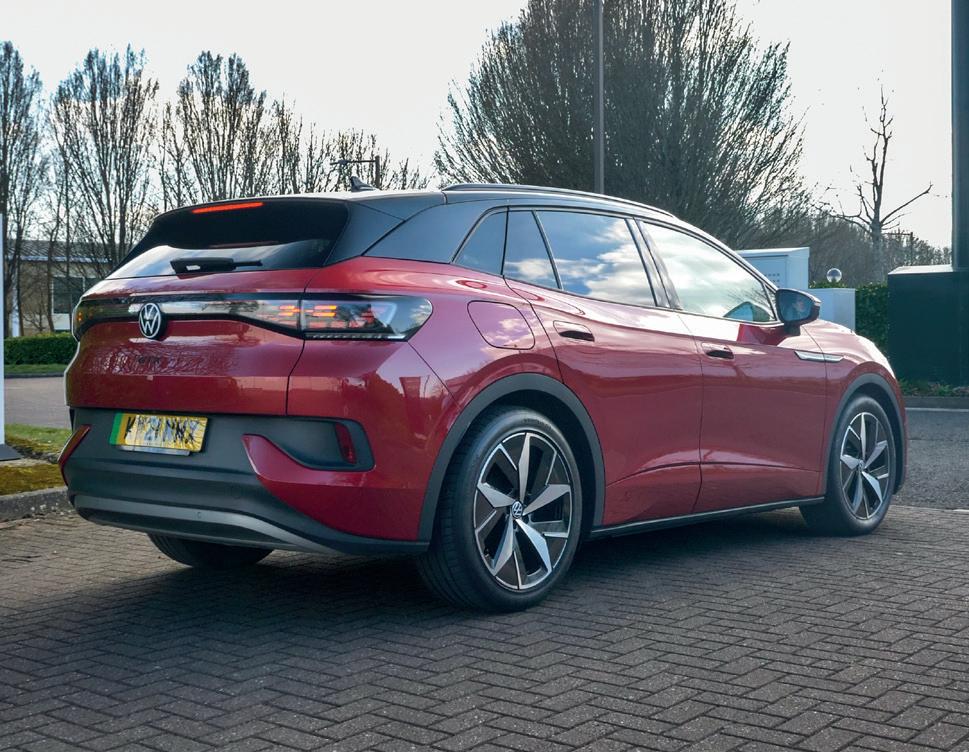
PERFORMANCE AND PRICE

As part of our review, we tested the ID.5 Style 77kWh Pro Performance 204PS model against the ID.4 GTX 77kWh 299PS 1spd auto model.
This mid-range ID.5 model delivers 204 PS and 310NM torque to achieve a 0-60mph time of 8.4 seconds. The top speed is limited to 99mph and the official WLTP combined range of the vehicle is between 311-316 miles.



A GTX version of the ID.5 is also available, which increases the 0-60mph time to 6.3 seconds with 299 PS and 460NM torque. The range on this model is reduced to 296-300 miles, however, because of the improved performance.
The ID.4 GTX model offers greater horsepower than the mid-range ID.5 (299PS) but the same amount of torque at 310NM. However, the ID.4 is supposedly quicker off the mark, with a 0-60mph time of 6.2 seconds, and it also has a top speed of 112mph.
VOLKSWAGEN ID. 20
Max power Battery capacity (net) 204 PS (150 kW) 77 kWh ID.5 PRO PERFORMANCE (STYLE, TECH, MAX) Max speed Max torque 99 mph 310 Nm Energy consumption Acceleration, (0-62 mph) 4.0-4.1 miles/kWh 8.4 sec Height Range (WLTP combined) 1,640 mm 311-316 miles Width (exc. door mirrors) Width (inc. door mirrors) 1,852 mm 2,108 mm Wheelbase Length 2,771 mm 4,599 mm Kerb weight Turning circle 2,042 kg 10.2 m Boot volume (seats up/down) Battery weight 549 / 1,561 litres 493 kg Max. trailer load (braked) 1,000 kg
21 VOLKSWAGEN ID.
The range of the ID.4 GTX is 301 miles, slightly less than the standard ID.5 and similar to the ID.5 GTX spec.

On paper, the ID.4 GTX looks to be the sportier of the two, but that wasn’t the case. It may have the edge in terms of the figures, but on the road, the ID.5 felt sharper and more agile than the ID.4.
The ID.4 GTX is the heavier car, and because of its awkward shape, it didn’t feel as nimble as the ID.5, which seemed light and effortless through corners. You could feel the weight of the ID.4, which did offer a great deal of balance and stability, but that did cause it to feel sluggish in comparison to the ID.5.
The initial punch of the ID.4 GTX did chuck you back into your seat, however, and on long, winding country roads, the extra weight did provide a sense of security, seemingly gluing you to the road without too much lean in the body. It was a similar story in the ID.5, although it did feel as though it had an extra spring in its step and was, on the whole, more fun to drive.
Prices for the 2023 Volkswagen ID.5 Style 77kWh Pro Performance 204PS start from £51,445. The ID.4 GTX is slightly more expensive, with prices starting from £52,125, although the difference is minimal.

FINAL VERDICT
There is little between the ID.4 GTX and the ID.5. They have similar design principles, they have an almost identical interior, and both are great fun to drive. They also cost almost exactly the same, and so when the price doesn’t matter, you simply have to ask yourself which is the better car?
For me, the answer to that question is the Volkswagen ID.5. Whilst the ID.4 GTX is great to drive and offers a decent performance package, the ID.5 seems to beat it in every area. It has a more interesting, muscular design which doesn’t compromise on space inside, and it is much more fun to drive.
The ID.5 may have won the battle over the ID.4 GTX, but both models prove that Volkswagen is one the right tracks with its ACCELERATE strategy.


Max power Battery capacity (net) 299 PS1 (220 kW) 77 kWh ID.4 GTX PERFORMANCE (STYLE, TECH, MAX) Max speed Max torque 112 mph 310 Nm Energy consumption Acceleration, (0-62 mph) Up to 3.7 miles/kWh 6.2 sec Height Range (WLTP combined) 1,637 mm Up to 301 miles Width (exc. door mirrors) Width (inc. door mirrors) 1,852 mm 2,108 mm Wheelbase Length 2,769 mm 4,582 mm Kerb weight Turning circle 2,224 kg 10.2 m Boot volume (seats up/down) Battery weight 543 / 1,575 litres 493 kg Max. trailer load (braked) 1,200 kg
WHAT’S NEW?
WHAT’S NEW?
A monthly round-up of all the latest releases and upcoming electric vehicles!
KIA SHARES FIRST LOOK AT EV9 ELECTRIC SUV
Kia has shared images of the exterior and interior design of its new flagship electric SUV, the EV9.



The Kia EV9 will make its global premiere in late March, but before the official release, the manufacturer has revealed a series of images which it says “encapsulates bold styling and sophisticated elegance inside and out.”
Through its ‘Opposites United’ design philosophy, Kia’s designers have “fused a unique combination of sleek, sculptural shapes and assured, assertive geometry to deliver a strikingly contemporary yet gracefully serene SUV.”
The front of the EV9 features clear-cut lines and body surfaces, with a ‘Digital Pattern Lighting Grille’ and vertical headlamps. A ‘Digital Tiger Face’ features two clusters of small cube lamps within the bodywork adjacent to each headlamp. The EV9’s ‘Star Map LED daytime running lights (DRL)’ create a new illumination experience and delivers an animated lighting pattern that will denote Kia’s Digital Tiger Face for the brand’s future EV models.
The shape and style of the vehicle is formed by a polygonal design language, which aims to achieve aerodynamic efficiency whilst presenting a strong,
muscular aesthetic. The rear of the vehicle continues the theme of simple, clean lines, with slim rear lights that mirror the design of those at the front.
“The Kia EV9 breaks new ground, aiming to redefine standards for design, connectivity, usability and environmental responsibility,” said Karim Habib, Executive Vice President and Head of Kia Global Design Center. “The Kia EV9 offers customers an exceptionally high-quality proposition and a fresh EV perspective in the family SUV sector. This new vehicle typology provides instinctive experiences and excellent comfort for not just the driver, but all occupants, through innovative use of space, technology and design.”
Built on Kia’s Electric Global Modular Platform (E-GMP), the EV9’s long wheelbase, low beltline, and completely flat electric vehicle architecture allows space for all occupants to relax with “lounge-style comfort” in all three rows of seats. Offered in both six- and seven-seat formats, Kia captured feedback from families to evaluate seating configurations and features to ensure the EV9 delivers equality of space, comfort and experience for all occupants without placing all of its focus on the driver.
Occupants sitting in the first and second-row seats can simultaneously recline their seats to relax and rest when the EV9 is charging. The seats in the second row can also be swivelled 180 degrees so that occupants can interact with those sitting in the third row. The third-row seats also offer cup holders and charging points for mobile devices.
” “
The Kia EV9 breaks new ground, aiming to redefine standards for design, connectivity, usability and environmental responsibility.
objective
VOLKSWAGEN UNVEILS GAME CHANGING ID. 2ALL CONCEPT
Volkswagen has taken a significant step in breaking down the price barrier to EV adoption as it unveiled the ID. 2all concept.
The latest concept vehicle in the ID. range will offer front-wheel drive, a 280-mile range and, most importantly, a starting price of around £22,000. A powerful 166 kW / 226 PS electric motor of the Volkswagen is integrated into and drives the front axle, allowing the vehicle to accelerate from 0 to 62mph in less than seven seconds. At DC quick-charging stations, the battery can also be charged from 10 to 80 per cent in 20 minutes.


The production version will be based on the MEB Entry platform and is one of ten new electric models that Volkswagen will launch by 2026. This year alone sees the introduction of the new ID.3, the ID. Buzz with long wheelbase and the ID.7 saloon. This will be followed by a compact electric SUV in 2026.
Thomas Schäfer, CEO of Volkswagen Passenger Cars, said: “We are transforming the company rapidly and fundamentally – with the clear objective of making Volkswagen a genuine Love Brand. The ID. 2all shows where we want to take the brand: close to the customer, top technologies and a fantastic design. We are implementing the transformation at pace to bring electric mobility to the masses.”
Kai Grünitz, Member of the Brand Board of Management responsible for Development, said: “The production version of the ID. 2all will be a full-value electric vehicle for every day of the year. A typical Volkswagen with sufficient space and a long range so that the destination can be reached without problems, even on long journeys. Thanks to the extremely variable MEB platform, our customers will also benefit from state-of-the-art technologies in the price class around 25,000 euros. Volkswagen is once more democratising progress here. And that is also exactly our goal.”
PUTS Q6 E-TRON THROUGH ITS PACES IN COLD WEATHER TESTING
The all-new Audi Q6 e-tron has undergone a cold weather testing programme in the far north ahead of its scheduled release in 2025.

The close-to-production Audi Q6 e-tron is just the beginning of the largest model offensive in the history of the brand, with Audi set to introduce more than 20 new models by 2025, more than ten of which will be electric.
Audi is currently putting the production-oriented Q6 e-tron prototype through its paces in the far north of Europe under strict safety regulations. The future model series is the first to be built on the new Premium Platform Electric (PPE) technology platform. With its 800-volt electrical system, powerful and efficient electric motors, an innovative battery and charging
management system, and a newly developed electronics architecture, the production-oriented Q6 e-tron prototype marks the next major step in the electrification and digitalization of Audi’s model range.
The upcoming Q6 e-tron model series, which comes in SUV and Sportback body variants, represents sustainable production, the upskilling of the workforce at the Ingolstadt site, and the electric future of the company.
“Our Vorsprung 2030 strategy provides the right answers, even in times of multiple crises,” says Markus Duesmann, CEO of Audi AG. “We are completely focused on sustainability and systematically advancing the digitalization and electrification of our products.”
NEW?23 WHAT’S NEW?
NEW?
AUDI
“
We are transforming the company rapidly and fundamentally – with the clear objective of making Volkswagen a genuine Love Brand. ”
FIRST DRIVE
Can we convert an oldschool petrolhead to EVs?
an EV for the first time to see if he dad, Paul, behind the wheel of Charlie Atkinson, puts his EV Powered’s editor,
can convert him over to an electric vehicle.

FIRST
EV 24
TIME
25 FIRST TIME EV
Before the drive...
What are your thoughts on electric vehicles?
I’ve never really been convinced. I love my cars; I grew up driving all sorts of classic cars, such as MK1 Escort’s, so I have a real passion for cars. I know the world is going electric, but I do have some concerns. You hear these horror stories of people running out of power or having to sit and charge for hours on end and it doesn’t appeal to me. I did test drive a Volkswagen ID.3 for a few minutes before and it was a strange experience. I found it very plastic-y, not very comfortable and not very welcoming as a car.

What do you drive now?
I have a 2L Volkswagen Tiguan, I call it the Volkswagen Tank because it’s just bombproof. I know it’s a bit boring, but it can do about 600 miles off a full tank and there’s plenty of room in the back for my dogs. That’s all I need it for, really. It does the job.
First impressions...
We have a top-of-the-range Nissan Leaf e+ Tekna for you today. What do you think?
I like it. I think it’s a good-looking car. It looks really sport, not too big but not too small, either. The alloy wheels are nice and I like the black and silver two tone colouring. The rear tailgate has a little spoiler, and the front is quite impressive, too. Some electric vehicles look a bit bland but the front spoiler looks decent. I could see myself driving it. The interior is nice as well, nice and spacious and I like the fact that it’s got the traditional speedometer. I wouldn’t get on with one of the
Continue onto next page
“
I know the world is going electric, but I do have some concerns. You hear these horror stories of people running out of power or having to sit and charge for hours on end and it doesn’t appeal to me. ”
giant iPad-style infotainment screens that a lot of the EVs have, so the size of this one is fine. It’s all very ergonomic, and it’s got everything I’d need. There’s plenty of headroom in the back but there’s not a great deal of legroom. That’s not too important for me, however, as I’m usually the only one in my car and I’ll never be in the back, so that doesn’t matter too much. The boot is a decent size, although I wouldn’t be able to fit the cages for my dogs in the back because of the lip. Again, that’s not too important as they’re only small and I can just put a liner in there and take the parcel shelf out. There’s plenty of room, so that’s another box ticked.
In the car...
What’s it like driving an electric vehicle?




Really good, it’s nice and smooth and the pickup is great. We had a couple of moments where I could quickly nip into a space at a roundabout or at a junction, so that instant power is really good; I’d have had to sit and wait in my Tiguan. I was really impressed with the regenerative braking, too. It’s great to be able to put your left foot out of the way and rely on that one pedal driving. It’s really good for driving as well, especially down the country roads near where I live. It’s not always about just going from A to B; I like driving and the regen braking lets you control your acceleration so much better, so I enjoyed that.
Thinking about it, the range wouldn’t be an issue. I drive eight miles to and from work three days a week. Maybe once or twice a week I drive to the train station to go to the football, and then a few other trips here and there, so I’d only need to charge once a week maximum. I have a driveway so I’d be able to charge at home too, so it’d be cheaper to run. I’ve always used the example that if I needed to drive to Scotland, I could do that in one trip in my Tiguan, whereas I’d perhaps need to stop and charge twice in this Leaf. I know that you should probably stop a couple of times on a long journey like that, but if I wanted to do it in one go then I could. However, in the thirty-odd years I’ve lived in Northampton, I’ve still never
FIRST TIME EV 26
“ Watch the full video on EV Powered’s YouTube channel
It’s not always about just going from A to B; I like driving and the regen braking lets you control your acceleration so much better, so I enjoyed that. ”
27 FIRST TIME EV
been to Scotland, so it’s a bit of a pointless argument, really.
I have to say, I have been really impressed with this. At £36,000, I could afford this car, and I would have one of these (Nissan Leaf e+ Tekna), to be honest with you. I’m due to change my car in a few months, so I’ll definitely be looking at an electric car. Something like this would do me just fine.


Final verdict...
It’s good, it did take some getting used to but when you do get used to all the different things like the weird little gear selector and the actual silence of it, it’s quite impressive. I love the speed of it and the acceleration, but what impressed me the most was the driving experience.

Is your future electric?
I think so, yes. I’m going to seriously look at it. My car is due for changing in the next six months. I know the used car market for petrol and diesel is really struggling at the moment, and I was considering a new car. When I’ve looked at electric cars before, I have been put off by the price, but £36,000 for this car is very doable. This would suit me, the range and everything about it would suit me. There’s a very good chance that in the next six months you’ll see me knocking about in a brand-new Nissan Leaf, or another electric car of some kind.
“
I’m due to change my car in a few months, so I’ll definitely be looking at an electric car. Something like this would do me just fine.
”
“
I love the speed of it and the acceleration, but what impressed me the most was the driving experience.
”
” “ POWER RANGE PRICE 217PS and 340Nm of torque 239 miles (319 City Driving Cycle) £36,445 NISSAN LEAF E+ TEKNA FACT SHEET ACCELERATION 0-62mph in 6.9 seconds BATTERY CHARGING (50kW Rapid Charger) from 20% to 80%: MAX SPEED 90min 98mph
There’s a very good chance that in the next six months you’ll see me knocking about in a brandnew Nissan Leaf, or another electric car of some kind.
WHEN WILL ELECTRIC VEHICLES TAKE OVER THE WORLD?

The ten countries that will transition to EVs first!
As the world heads towards a fullyelectric future, Hippo Leasing has analysed the countries with the most passenger car sales to predict when EV sales will overtake ICE.
TOP TEN 28
CHINA 3

FRANCE 4







GERMANY 1 PASSENGER CAR SALES 2021 2,622,132 AVERAGE GROWTH OF CARE SALE (%) 2.47 EV SALES 2021 690,000 EV GROWTH (%) 109.09 YEAR OF EV TAKE OVER 2025 UK 2 PASSENGER CAR SALES 2021 1,647,181 AVERAGE GROWTH OF CARE SALE (%) 1.64 EV SALES 2021 400,000 EV GROWTH (%) 90.48 YEAR OF EV TAKE OVER 2026
PASSENGER CAR SALES 2021 21,481,537 AVERAGE GROWTH OF CARE SALE (%) 5.37 EV SALES 2021 6,200,000 EV GROWTH (%) 77.14 YEAR OF EV TAKE OVER 2027
PASSENGER CAR SALES 2021 1,659,005 AVERAGE GROWTH OF CARE SALE (%) 0.01 EV SALES 2021 450,000 EV GROWTH (%) 60.71 YEAR OF EV TAKE OVER 2027
ITALY 6
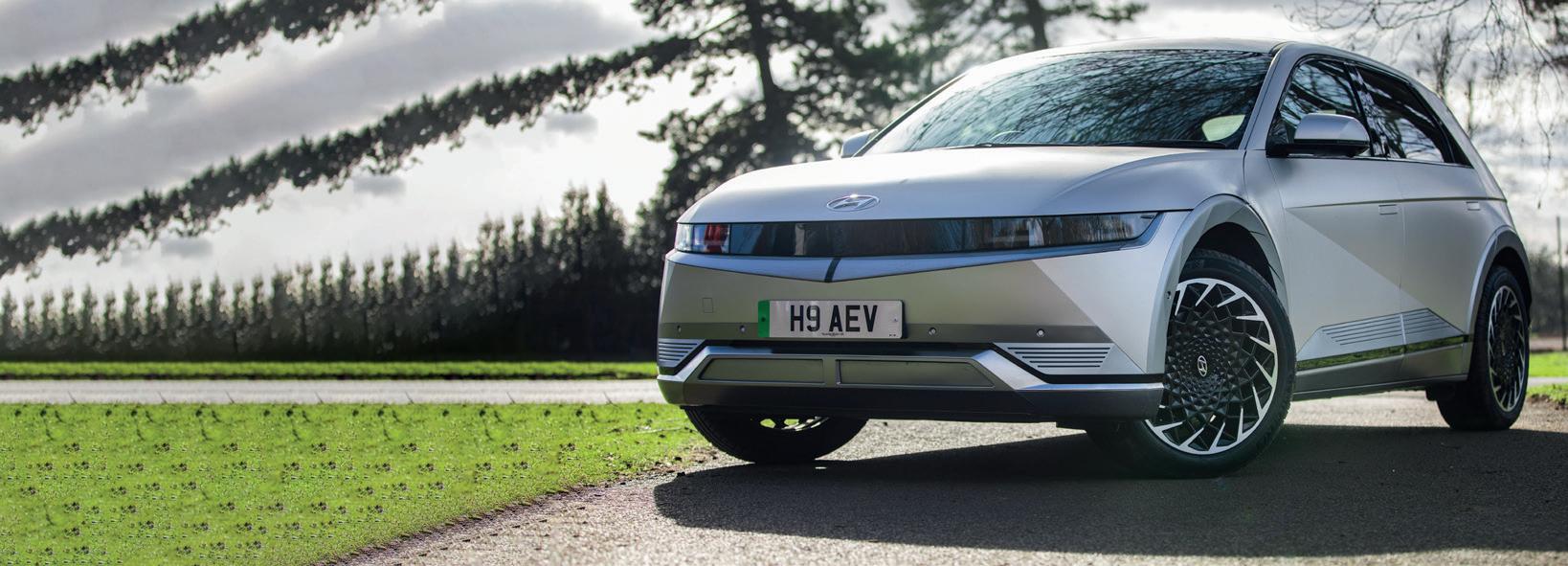


SOUTH KOREA 7

AUSTRALIA 8
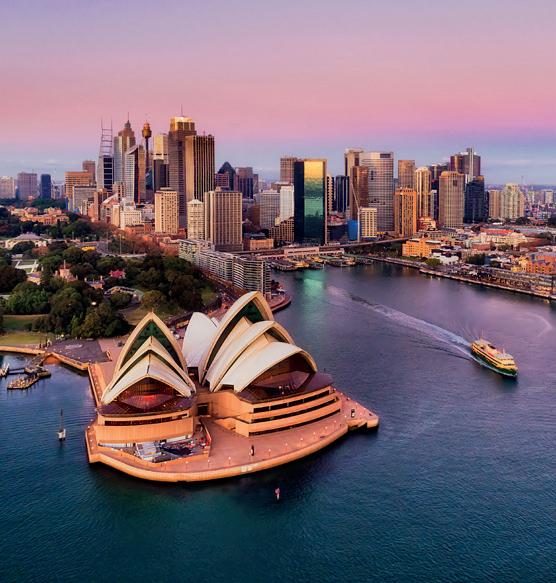
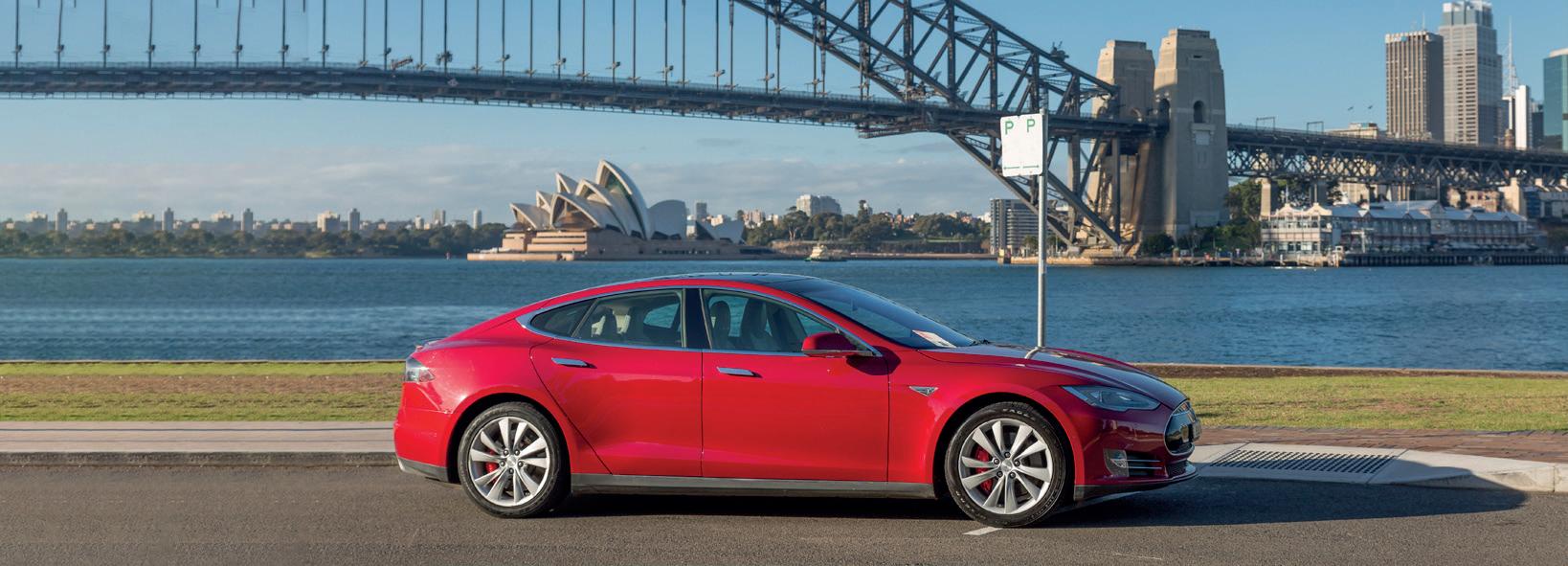


PASSENGER CAR SALES 2021 3,350,050 AVERAGE GROWTH OF CARE SALE (%) -1.45 EV SALES 2021 1,300,000 EV GROWTH (%) 18.18 YEAR OF EV TAKE OVER 2030
PASSENGER CAR SALES 2021 1,468,873 AVERAGE GROWTH OF CARE SALE (%) 2.26 EV SALES 2021 190,000 EV GROWTH (%) 118.18 YEAR OF EV TAKE OVER 2032
USA 5
PASSENGER CAR SALES 2021 1,468,873 AVERAGE GROWTH OF CARE SALE (%) 2.26 EV SALES 2021 190,000 EV GROWTH (%) 58.33 YEAR OF EV TAKE OVER 2039
PASSENGER CAR SALES 2021 753,256 AVERAGE GROWTH OF CARE SALE (%) 0.07 EV SALES 2021 34,000 EV GROWTH (%) 100.00 YEAR OF EV TAKE OVER 2045
BRAZIL 9






PASSENGER CAR SALES 2021 1,558,467 AVERAGE GROWTH OF CARE SALE (%) -2.70 EV SALES 2021 3,600 EV GROWTH (%) 125.00 YEAR OF EV TAKE OVER 2056
PASSENGER CAR SALES 2021 859,476 AVERAGE GROWTH OF CARE SALE (%) 3.66 EV SALES 2021 160,000 EV GROWTH (%) 14.29 YEAR OF EV TAKE OVER 2071
SPAIN 10
PASSENGER CAR SALES 2021 3,675,698 AVERAGE GROWTH OF CARE SALE (%) 3.12 EV SALES 2021 160,000 EV GROWTH (%) 14.29 YEAR OF EV TAKE OVER NO TAKE OVER
JAPAN 11
PASSENGER CAR SALES 2021 3,082,279 AVERAGE GROWTH OF CARE SALE (%) 2.72 EV SALES 2021 23,000 EV GROWTH (%) 91.67 YEAR OF EV TAKE OVER NO TAKE OVER NO TAKE OVER
INDIA 12
TOP TEN 32
GERMANY’S EV UPTAKE COULD SEE EV TAKEOVER FIRST
It appears that Germany has fallen in love with electric driving. Between 2020 and 2021, Germany saw the sale of EVs grow 109% from 330,000 to 690,000. If that growth rate continues, they’ll see EV sales reach the estimated total of all car sales as soon as the end of 2024, meaning Germany could be the first country in the world to go fully electric as far as passenger cars are concerned.
UK VS USA: WHERE WILL EVS TAKE OVER FIRST?
Despite the United States of America’s size and population, it’s actually the United Kingdom’s drivers that are pushing the charge to become fully electric first. When you look at the industry overall, the UK boasts higher growth averages when it comes to both total passenger car and EV sales.
Passenger car sales in the USA have dropped every year since 2014 and it’s resulted in a negative average growth of just -1.45%, meaning by 2030, they’re predicted to have less than 3 million cars on the roads. However, when it comes to EVs, America is showing a decent uptake in electric motoring, with an 18.2% growth between 2020 and 2021, reaching a total of 1.3 million EVs by the start of 2022.
In comparison, the UK, despite having a few rocky years between 2017 and 2020, has picked up once again in 2021 and has an average growth percentage of a much healthier 1.64%. As for EVs, they manage a huge 90.5% growth increase between 2020 and 2021.
This data allows us to then see when EVs will take over, and far as this head-to-head goes, it’s the UK that stands to make the switch first, with our data showing EV sales catching up with total passenger car sales by 2026, with around 1.85 million on the road. As for the USA, they won’t reach the takeover mark until 2030, when they’ll have an estimated 3.2 million EVs roaming the streets.
FRANCE, ITALY AND SPAIN – EUROPE’S TRANSITION TO EVS?
France will lag a year behind the UK in its transition, with a takeover set for 2027, making it the third European country to switch to EVs. However, with an EV growth percentage of 118%, Italy (which comes sixth on this list) is one of the fastest growing countries for EV uptake. Despite its growth, Italy only recorded 120,000 sales of EVs in 2021, meaning a takeover from ICE sales won’t come until 2032. Spain is the last entry on this list, coming in at number ten. However, with just 69,000 EV sales in 2021, Spain saw an EV growth percentage of just 53%, meaning a full switch to EVs won’t take place until 2171, according to these figures.
CHINA COULD BE FULLY ELECTRIC BY 2027 WITH OVER 30 MILLION EVS
China has the highest number of car sales in the world and by a long, long way. China sold 21,481,537 cars in 2021, which is only around 100,000 car sales more than the combined number of cars sold in Japan, the USA, India, Germany, France, the UK, Brazil, South Korea, Italy and Spain! (21,379,835).
So with car sale figures so high, it’s interesting to compare it with the uptake of EVs in the country. The average growth percentage (calculated between 2010-2019 to omit the last few years due to the fact that hardly anyone was buying cars during the pandemic) was around 5.4%, giving us an accurate idea of how many more cars are sold each new year. In comparison, the growth percentage of EVs was up to just over 77% between 2020 and 2021. At this rate, we can calculate that by 2026, China could have over 30 million EVs on the road, with electric-powered cars surpassing the current total car growth rate by the start of 2027.
4 2 10 5 9
GROWING MARKETS SET FOR DELAYED EV SWITCH
South Korea is one of the fastest growing EV markets in the world, and with a number of Korean car manufacturers (think Hyundai and Kia) making considerable waves in the market, an EV takeover date of 2039 seems slightly sluggish.
The same can be said for Australia, which saw the percentage of EV sales grow by 100%, the third highest on this list. However, it is one of only two entries on this list (along with Spain) which saw less than a million passenger car sales in 2021, and with an average growth of car sales percentage of a mere 0.07%, Australia will have to wait until 2045 before it sees a full switch to EVs.
APAN AND INDIA WON’T SEE AN EV TAKEOVER SALES PREDICT
Unless new regulations come in for Japan and India at the moment, due to sales it seems EV’s won’t overtake ICE’s any time soon. Both Japan and India sold over 3 million passenger cars in 2021, but their number of EV sales make up a small margin of that. Japan sold £160,000 EV’s in 2021 while India sold 23,000. Due to the predicted growth, neither will see EV’s takeover other vehicles. EVs won’t overtake in Spain until 2171 and Brazil until 2056, if sales continue in the same fashion.
METHODOLOGY
To put this piece together we first took the average growth rates of total passenger cars sold in the countries that currently sell the most passenger cars. This enables us to predict how many cars will be on the road, all the way up to 2050. We then did the same for EVs to see if the growth of sales will, at some point, reach the predicted amount of total cars, meaning that all cars would therefore be electric. It’s also important to highlight that we also disregarded the dates when countries have implemented a forced switch to electric, as we’re strictly looking to see how things would look with the current growth rates in place.
Total passenger car sales were sourced from the Organisation Internationale des Constructeurs d’Automobiles (OICA) with EV sales from the International Energy Agency. Russia, Indonesia and Turkey were omitted from the top 12 due to a lack of data.
33
TOP TEN
1 GERMANY 2 UK 3 CHINA 4 FRANCE 5 USA 6 ITALY 7 SOUTH KOREA 8 AUSTRALIA 9 BRAZIL 10 SPAIN 1 6 3 7 8
AUDI GEARS UP TO GO OFF-ROAD:
AUDI REVEALS ELECTRIC MOUNTAIN BIKE POWERED BY FANTIC

Audi is expanding its range of e-mobility products with the launch of the limited run Audi electric mountain bike powered by Fantic.
The latest highlight from Audi Genuine Accessories is the next step in the brand’s effort to offer alternative means of e-mobility beyond four wheels. Audi is no stranger to going off-road; the brand’s illustrious history in the World Rally Championship and use of quattro all-wheel drive during the 1980s shaped the brand and defined its DNA. Audi’s motorsport focus lies in the sands of the Arabian Desert and the Dakar Rally with the innovative RS Q e-tron E2 whose design has inspired the Audi electric mountain bike powered by Fantic.
“At Audi, we’ve been bold in our commitment to becoming a leader in providing sustainable premium mobility,” said Andrew Doyle, Director Audi UK. “The Audi electric mountain bike in cooperation with

Fantic is another fantastic example of how we can expand our mobility offering to customers that extends beyond the award-winning models they drive.”
Like Audi’s fully electric, road-going e-tron model range, the Audi mountain bike powered by Fantic stands out on the breadth of its abilities and has ver-
PRODUCT SPECIFICATION
satility at its core. From touring to endure biking, it’s at home on a variety of terrain but its greatest strength is downhill riding thanks to full suspension travel of 180mm, wide wheels and off-road tyres.
Based around an enduro frame made out of lightweight aluminium, it has been designed to allow a relaxed riding position so riders can better react to obstacles and terrain ahead. The battery pack (Fantic Integra 36 Volt, 720 Wh) is located within the frame and marked out by eye-catching e-tron branding and decals. It supplies power to the Brose S-MAG 36 Volt 250 Watt motor which delivers up to 90Nm of torque.
The Audi electric mountain bike powered by Fantic provides riders with four levels of electrical assistance: Eco, Tour, Sport and Boost. Eco has been calibrated to deliver maximum efficiency and range with notable electrical assistance, while Tour brings a notable level of electrical boost. Sport has been engineered to add powerful assistance for sport cycling and the final mode, Boost, delivers the maximum level of electrical assistance for challenging, hilly routes.
A small digital display located on the handlebars provides an overview of key data such as battery charge and speed at a glance to the rider. When the battery level drops to <10%, the charge level indicator will begin to flash in the top right corner of the display.
Customers wishing to express an interest in the Audi electric mountain bike powered by Fantic can find additional information at Audi Genuine Accessories.
Öhlins TTX 22M T205x65, Spring
click)
Brakes IN.CA.S, 220 mm disc – 203 mm disc
Seatpost 30,9-100 mm/ 125 mm-CAVO-INT
E-BIKES 34
Battery Motor Frame Fantic Integra, Lithium 36 Volt, 720 Wh Brose S-MAG 36 Volt 250 Watt, 90 Nm Aluminium / part Carbon S-M-L
Fork Fantic Integra, Lithium 36 Volt, 720 Wh Rear Derailleur Shift Levers Shock SRAM GX Eagle 12v Sram GX Eagle 12 V (single
MORE GOVERNMENT SUPPORT NEEDED TO ACCELERATE ELECTRIC TRUCK ADOPTION
UK truck manufacturers and operators need more government support for electric truck adoption, according to Asher Bennett, CEO and founder of Tevva Hydrogen Electric Trucks.


The IPCC just this week said that the world can still avoid the worst of climate collapse with genuine change, but that if we keep emitting at the current rate, the carbon budget for 1.5C will be exhausted by 2030. That juxtaposition of hope and grim reality should be enough to focus everyone’s minds on the opportunities and threats that lie ahead.
At Tevva we believe that further government action is required to ensure that the UK achieves its net zero goals in the best and fastest possible way for the good of the environment, economy and British people. The recent Net Zero Review set out the ‘historic opportunity’ offered by net zero in the UK, by creating a new era of change and opportunity. Yet the report also made clear that more should be done to ‘back business’ and reap the economic benefits. Our expertise lies in electric vehicles and specifically the electrification of trucks. Despite accounting for just two percent of vehicles on our roads, heavy-duty trucks (HDVs) are responsible for over a quarter of road transport emissions. Road transport and HDVs are also one of the largest sources of air pollution which causes 350,000 premature deaths per year in Europe.
Clearly more must be done to accelerate the decarbonisation of commercial vehicles, and we’re
asking the UK government to bring truck incentives in-line with those found in Europe. Brexit put us in a position where as a nation we were free from EU state aid rules which limited the amount of support governments could give to certain industries. Yet, the UK is lagging behind its European neighbours when it comes to incentives for electric truck adoption.
SCAN THIS QR CODE TO LISTEN TO THE EVERYTHING EV PODCAST WITH ASHER BENNETT

As a vehicle manufacturer Tevva can offer its customers discounts at point of sale thanks to government incentives, with a maximum of £16,000 for small trucks and £25,000 for large ones. Yet, if you compare this support to what’s on offer in other European countries, you’re left with a feeling that more could be done. In Germany, for example, the government provides 80% of the price differential between diesel and battery-electric trucks, in the Netherlands it’s 45%. That’s potentially between £50-90,000 per truck more than what’s on offer in the UK.
We appreciate the British government’s support which enables us to make our 7.5t battery-electric truck even more appealing to fleets. But for this country to meet its net zero goals, more action is needed to stimulate electric vehicle manufacturing in the UK, which is really the only bright spot in an industry that has reached its lowest ebb for over 60 years.
The electrification of trucks is inevitable, and the technology has developed to a point where an electric truck is a viable proposition for many operators. There’s a huge appetite among fleets for electric trucks, as the opportunity to reduce emissions makes good business sense. Obviously there needs to be trust in the technology and clarity on total cost of ownership (TCO). Tevva is working with its customers to address both of these points and we’re confident that our electric trucks will save them money over the lifetime of the vehicle and improve their fleet and driver performance.
By developing a range of battery-electric and hydrogen-electric medium- to heavy-duty trucks that can improve air quality, vehicle safety, and lower total cost of ownership, Tevva is leading commercial vehicle decarbonisation in the UK. Yet the market isn’t ready to adopt on scale without further incentivisation, at least not with the required urgency.
35 OPINION
Manage your fleet like a master
Your fleet is optimised, you’re on top of regulations, your drivers are happy. You even have enough time for your day job. This is what managing a fleet with Alphabet feels like.
Get everything you need to be at one with your fleet. Welcome to Fleet Dreams.
Alphabet.co.uk/FleetDreams

NEED ADVICE ON BEING MORE ENERGY-EFFICIENT?
+ The latest news and updates for everything Electric Home


New report reveals GLOBAL WIND CAPACITY FALL

BNEF’s 2022 Global Wind Turbine Market Shares report found that developers brought online 86GW of wind turbines globally in 2022, after growth in installations stalled in the world’s two largest markets, China and the US. The majority of new wind farms were added on land (89%), as commissioning of new offshore turbines fell to 9.1GW– down 46% compared with 2021.
“Alarm bells should be ringing,” said wind analyst at BNEF and lead author of the report Cristian Dinca.
“Governments around the world are increasing their ambition on decarbonization and, at the same time, new additions are slowing on the ground.”
Goldwind edged out Vestas to the top spot in the global wind turbine supplier ranking, the first time a Chinese manufacturer has held the position. The company supplied 12.7GW of projects last year, almost 90% of which were for its home market. Denmark-based Vestas commissioned 12.3GW overall in 2022, 3GW ahead of its US-based rival GE, which was in third place.
Offshore wind installations fell steeply in 2022, the year after China’s national feed-in premium for projects at sea expired. The drop was partly offset by strong activity in the UK, that commissioned over 3GW of offshore wind for the first time. European turbine makers seized the opportunity, as Vestas secured first place in the offshore wind ranking ahead of Chinese manufacturer Shanghai Electric, while Mingyang took third place.
“We expect the drop in offshore wind to be shortlived,” said head of wind research at BNEF Oliver Metcalfe.
“Germany and the Netherlands will install major projects again in 2023, while the industry will also ramp up in newer markets like France and Taiwan.”
BNEF identified 49GW of new wind capacity added in China last year, meaning the country accounted for more than half of global wind additions. Six turbine manufacturers based in China made the top 10 in BNEF’s global ranking. While still the second largest market for new wind build, US additions fell by over 4 gigawatts in 2022.
“Uncertainty around extensions to tax incentives for wind projects has stunted the US wind industry for two years,” said Metcalfe. “That changed with

NEWS 38
Wind capacity additions fell by 15% in 2022, following two years of record build, according to a new report by research company BloombergNEF (BNEF).
the passing of the Inflation Reduction Act last year. We think the incentives in the IRA will help drive a cumulative 135GW of new wind capacity
from now until 2030, proving the crucial role governments can and must play as they aim for net zero emissions.”
WALES launches TIDAL LAGOON research scheme
The money will be available for at least three research projects focusing on the deployment of tidal lagoon technology.
The research will help address the barriers that have prevented the development of the technology and give more insight into the benefits it could bring to Wales, he said.
The work will advance the future development of a tidal lagoon project in Welsh waters.

Drakeford said: “Our ambition is to make Wales a world centre for emerging tidal technology.
“We cannot deliver this by ourselves. We need to work in partnership with the industry to build the right environment for the sector to flourish.
“The research will make a significant contribution to delivering a future tidal lagoon project in Wales and move the sector forward as a whole.”
A tidal lagoon is a power station that generates electricity from the natural rise and fall of the tides.
A large volume of water is captured behind a man-made structure which is then released to drive turbines and generate electricity.
As the tides rise and fall, with no requirement for fuel, tidal power is truly renewable and unlike other forms of renewable energy, is entirely predictable.
Welsh First Minister Mark Drakeford has announced £750,000 for the Tidal Lagoon Challenge.
The Tidal Range Alliance is a group that brings together developers, companies, and supply chain businesses involved in tidal range energy projects in the UK and overseas.

Ioan Jenkins, chair of the Tidal Range Alliance added: “The Tidal Range Alliance is pleased the Welsh Government remains committed to delivering tidal range and ensuring this vital technology delivers secure, renewable power, as well as jobs and investment for Wales and the UK.
“The technology has already been proven at scale and this research will help provide the evidence that will unlock the first wave of tidal range projects, here in Wales.”
39 NEWS
SSE is providing a £100m investment boost into a major UK pumped hydro storage scheme

The project, which received planning consent from the Scottish Government in 2020, would also more than double Britain’s total current electricity storage capacity.

SSE hopes to make a final investment decision on Coire Glas in 2024, subject to positive development progress and the prevailing policy environment, and to fully construct and commission the pumped storage scheme by 2031. Once complete, Coire Glas would be capable of delivering 30GWh of long duration storage. The scheme would take excess energy from the grid and use it to pump water 500 metres up a hill from Loch Lochy to an upper reservoir equivalent to nearly 11,000 Olympic-sized swimming pools.
SSE Finance Director Gregor Alexander said: “Coire Glas will be one of the most ambitious energy infrastructure projects the UK has ever seen and is a key component of SSE’s commitment to helping lead Scotland and the UKs’ energy transition.
“The £100m investment we have announced today will help play a crucial role in further advancing the Coire Glas project towards a final investment decision in 2024, which will enable the project to move towards construction. If delivered around the turn of the decade, Coire Glas could play a crucial role in getting the UK to net zero.”
NEWS 40
Located on the shores of Loch Lochy, between Fort William and Inverness, the Coire Glas project is expected to require a capital investment of over £1.5bn to construct and, if approved for final delivery, would be the first pumped hydro storage scheme to be built in the UK in 40 years.
RENEWABLE ENERGY to heat three of Stroud District Council’s biggest buildings
Thousands of tonnes of carbon emissions from three of Stroud District Council’s biggest buildings will be cut when air source heat pumps are installed in place of ageing gas boilers for heating and hot water.

Stroud District Council has been successful in bidding for a £4.7million grant from the Government’s Public Sector Decarbonisation Scheme and will add £700,000 to the project for the pumps at Stratford Park Leisure Centre and the Museum in the Park in Stroud, plus The Pulse Leisure Centre in Dursley.
The council’s Ebley Mill HQ and Brimscombe Port Mill have both been heated by water source heat pumps since 2022.
This proposed move aligns with the council’s overarching 2030 strategy to help the district become carbon neutral.
An air source heat pump system is estimated to last for a minimum of 20 years and these three


installations will reduce carbon emissions by an estimated 14,652 tonnes over that time.
Energy-saving measures including increasing the solar PV arrays, and introducing solar battery storage are being considered to help offset an increase in electricity consumption.
“Our mission is to lead by example in the community, to help and encourage others to embrace renewable energy, and to make the changes now that are needed to equip our buildings for a low carbon future,” said council leader Catherine Braun.
Community Services and Licensing Committee Chair Chris Brine added: “We are doing everything in our power through our services, projects and policies to work with partners to reach our carbon neutral goal for the district.”
The work is expected to start in May this year and be finished in March next year.
MERSEYSIDE’S mega-battery is switched on to save billions in pounds and CO2
Europe’s biggest transmission grid-linked battery covers an area of around two football pitches in nearly one hundred containers and can store as much electricity as 1,500 electric cars, taking in the uneven power from wind turbines and smoothing it out for local homes and businesses. If you didn’t do this, lights would dim, or wires could melt. Most of that job today is done by either firing up mini generators - so called gas-peakers - to fill the power troughs or turning turbines off to prevent surges.
James Basden, co-founder and director of Zenobe, says their batteries will cut carbon emissions. “Battery storage sites like this are enabling more wind power to come on, but also it’s shutting down the gas generators that are currently operating and as a result we save huge amounts of CO2.”
But they should also cut bills too. When wind farms must turn off, they are paid to do this, paid to not generate. This is known as “curtailment” and the total cost is over half a billion pounds per year and rising as we have more renewables in the energy mix.
Zenobe and other big battery developers say if we can store it, we can use it and not pay to waste it.
“This is pushing power back onto the grid in a very consistent and predictable way... So sites like this are going to reduce the amount of curtailment. This site itself will save somewhere between 50 and £100m to consumers over the next 15 years.”
Batteries are one of many storage technologies in development.
It looks like a self-storage park: rows of shipping containers in a patch of Merseyside waste ground. But appearances can be deceptive as this is the first step in saving billions of pounds off bills and millions of tonnes of carbon. It’s a mega-battery.
Hydrogen has a potential role in storage too: use electricity for the energy intensive process of breaking hydrogen out of water. Getting the H from the H2O gives you a tank of that zero-carbon fuel.
Dan McGrail, from the trade body Renewable UK, says: “We’re going through one of the biggest changes in our energy system of all time at the moment. So having energy, energy storage in the system is going to be a really vital component of how the system works in the future and stays in balance to provide electricity for homes and businesses.”
41 COMMERCIAL NEWS
SOLAR PANEL GRANTS AVAILABLE FOR UK HOUSEHOLDS

Solar panel grants in the UK make it cheaper and easier to switch to green, renewable energy. Find out how you can qualify in 2023.
Solar panels capture energy from daylight and convert it to electricity that can power your home. They help you generate renewable energy, reduce your carbon emissions and make substantial savings on your energy bills. You might assume getting solar panels is complicated and expensive, but it doesn’t have to be. Setting up a solar energy system in your home and switching to a greener power source is much cheaper and easier with solar panel grants. These grants can lead to long-term cost savings, increased property value and reduced emissions.
You may be eligible for a grant if you receive certain types of benefits and live in a specific type of property. Read on to learn about the solar panel grants available in the UK in 2023 and the eligibility criteria for receiving funding for your installation.
PAY 0% VAT ON SOLAR PANELS IN UK
In its Spring Statement 2022, the former chancellor Rishi Sunak announced that VAT on ‘energy-saving products’ would be set at 0%, a reduction from the previous rate of 5% and the typical charge of 20%.
According to the government website, there is no distinction between solar PV, solar thermal and hybrid solar panels, but solar batteries are not included. There are some restrictions for those in Northern Ireland; homeowners only qualify for eligibility if they are over 60 or receive some form of benefit (for instance Child Tax Credit or Housing Benefit). All eligible parties (in Great Britain and Northern Ireland) will be reliant on installers and suppliers in order to qualify for this reduction; the products cannot be bought or installed DIY.
Further, the government website states: “If the cost of the products (not including VAT) is 60% or less of the total cost of the installation (not including VAT), you’ll pay 5% on everything.” If the products cost more than 60% of the total cost of installation, homeowners will pay 5% VAT on the labour and the standard rate of 20% for the products.
In addition to solar panels, ‘energy-saving products’ extends to central heating, insulation and heat pumps. This reduction in rate is timelimited and will end in March 2027.
ENERGY COMPANY OBLIGATION (ECO4) SCHEME
ECO4 is the latest phase of an ongoing government scheme to support low-income households by creating more energy-efficient homes. The scheme is all about saving energy, making homes

SOLAR PANELS 42
SOLAR PANELS
warmer and reducing carbon emissions. It aims to ensure large energy companies support incomerestricted households via their local authorities.
The government initially launched the ECO scheme in 2013, and the previous version, ECO3, was replaced by ECO4 in April 2022.
ECO4 allows you to apply for solar panels grants over the next four years, which could give you access to fully-funded solar panels for home installation.
GRANTS FOR SOLAR PANELS UK – DO YOU QUALIFY THROUGH ECO4?


The ECO4 scheme is open to all UK homeowners regardless of whether they own or rent their property. If you’re eligible, you can receive free or discounted solar panels. The support you receive will depend on your energy supplier and individual circumstances.
ECO4 IS AVAILABLE TO:
• Homeowners, landlords and private tenants
• People receiving income-related benefits
• Properties with inefficient electric heating
QUALIFYING BENEFITS FOR THE ECO4 SCHEME INCLUDE:
• Jobseekers Allowance (JSA), income based
• Employment and Support Allowance (ESA), income related
• Housing Benefit
• Pension Credit

• Income Support (IS)
• Universal Credit (UC)
• Work Tax Credit (WTC)
• Warm House Discount Scheme Rebate
• Child Tax Credits
• Child Benefit, depending on income threshold
The Child Benefit income threshold to qualify for ECO4 varies depending on how many children you have and whether you’re a single or two-parent household.
SINGLE-PARENT HOUSEHOLDS:
• One child – £19,900
• Two children – £24,800
• Three children – £29,600
• Four or more children – £34,500
TWO-PARENT HOUSEHOLDS:
• One child – £27,500
• Two children – £32,300
• Three children – £37,200
• Four or more children – £42,000
You can apply directly via your energy supplier or assess your eligibility by filling out the ECO4 eligibility questionnaire. A surveyor will then evaluate your premises and determine whether they’re suitable for solar panels.
43
THE LA FLEX SCHEME
LA Flex is short for Local Authority Flexible Eligibility. The scheme is an extension of ECO4. LA Flex is one of the tweaks and improvements made through the iterations of ECO3.
Many UK households fell through the cracks due to how the ECO3 scheme determined eligibility. Under the previous criteria, families at risk of not affording fuel couldn’t qualify, so the government created LA Flex to widen the net.
LA Flex gives councils and local authorities power to widen the eligibility criteria. In other words, it’s an alternative route into the same ECO4 funding, with similar measures but different eligibility criteria.
With LA Flex, you can qualify for free funding that covers the costs of energy-saving measures, such as solar panels for homes running on electric heating systems.
WHO IS ELIGIBLE FOR THE LA FLEX SCHEME?
• People in fuel poverty (households that spend at least 10% of their net income heating their home)
• People who are the most vulnerable during cold weather
THERE ARE THREE ROUTES TO SECURING FUNDING FOR SOLAR PANELS THROUGH

THE LA FLEX SCHEME:
ROUTE 1 (LOW HOUSEHOLD INCOME):
Annual household income of under £31,000
ROUTE 2 (HEALTH):
Health problems exacerbated by living in a cold home, such as cardiovascular, respiratory and mobility issues, or immune-suppressed conditions
ROUTE 3 (MULTI-PROXY ELIGIBILITY):
Energy bands E, F or G and meeting any two of the following criteria:
• House is in the LSOA 1–3 area
• The householder receives a Council Tax rebate based on low income only
• The householder is vulnerable to living in a cold home, as identified in the NationaI Institute for Health and Care Excellence (NICE) guidance
• The Local Authority Delivery (LAD) scheme, which aims to support vulnerable and low-income households, has referred the householder
• Members of the household receive free school meals.
• The household struggles with sustained debt on mortgage payments and utility bills, and has been advised to seek support from the local authority by the mortgage lender, the energy supplier or Citizens Advice
Local authorities set their own rules for LA Flex scheme qualification.
THE GREEN DEAL
The Green Deal was a government scheme giving households loans for energy-efficient home improvements.
The original Green Deal scheme ran from 2013 to 2015 when the government stopped financing the Green Deal Finance Company.
Thanks to private investors, the Green Deal Finance Company started offering loans for selected energy-efficient home improvements once again in 2017. According to Which? you can still get loans to fund energy-efficient changes in your home and pay the money back through your energy bills.
Through this scheme, you can get funding for various energy saving improvements, including installing solar panels to create renewable energy.
WHO IS ELIGIBLE FOR THE GREEN DEAL SCHEME?

You could be eligible for the scheme if your household has an electricity meter, including a pre-paid meter. If you live in a rented house, you and your landlord must agree to the improvements.
The loan is attached to the property and not you. If you sell your house, it passes to the new owner. Green Deal loans differ from bank loans and other credit facilities in that you repay the loan through a charge added to your electricity bill.
To get funding through the Green Deal scheme, you must get your property assessed by a registered Green Deal assessor. The assessment provides an advice report with a statement on whether the improvements will pay for themselves through reduced energy costs and how much you can save in annual energy bills.
SOLAR PANELS 44
45 SOLAR PANELS
THE SMART EXPORT GUARANTEE (SEG)
The SEG scheme doesn’t offer solar panel grants directly; instead, it provides an alternative way for households to save money on installing a solar energy system.
Solar panels are an investment for the future, and SEG delivers a solution to reimburse your investment and make the upfront costs negligible.
The SEG scheme launched in 2020 and requires energy suppliers with over 150,000 customers to pay homeowners for unused solar-generated electricity. Solar PV panels must be present in your home or business, and you can feed any electricity you don’t use into the National Grid. Under SEG, you get paid for every unit of electricity you give back.
WHO IS ELIGIBLE FOR SEG?
You must install a renewable electricity-generating system to be eligible for SEG (such as solar panels). You will also need a smart reader, since you’ll need to provide half-hourly export readings. Your installation and installer should be certified through the Microgeneration Certification Scheme (MCS), and you’ll need to show this.

To receive payments through SEG, you must apply to an SEG licensee – an electricity supplier that offers a SEG tariff. SEG licensees must provide a tariff if you have installed qualifying solar panels. The SEG tariff will always remain above zero, and the SEG licensee doesn’t have to be the same as your current energy supplier. Tariffs can change over time, so check them regularly to ensure you’re on a competitive tariff.
energy sources which rely on fossil fuels, solar panels can lower your carbon footprint and reduce your impact on the environment.
INDEPENDENCE FROM THE NATIONAL GRID
Solar panels can help you generate electricity in areas without access to the National Grid. The storage capacity of solar batteries can give you complete energy independence. This also means you won’t have to deal with energy suppliers and price increases.
WHAT OTHER SOLAR PANEL GRANTS USED TO BE AVAILABLE?
In an effort to introduce solar technology as a mainstream home improvement, the government used to offer various incentives and grants that were very enticing.
RENEWABLE HEAT INCENTIVE
First launched in 2014, the Renewable Heat Incentive (RHI) scheme closed for new applications on 31 March 2022. Through the RHI, the government would pay quarterly payments of 20.66p/kWh for seven years after installation of solar panels, eventually amounting to a saving of £2,981.
THE COST OF SOLAR PANELS IN THE UK
The cost of solar panels in the UK has dropped in the past decade, so there has never been a better time to install them and switch to renewable energy. The average domestic solar PV system costs around £6,000.
Factors that will influence the amount you pay include your choice of installer, the quality of your panels, the size of the array, ease of roof access and whether you choose building-integrated panels or panels that sit on top of your roof.
Alongside various grant schemes, you can now save even more with the current 0% VAT rate. If you purchase a solar panel system today, you can typically break even in around 5-7 years and save about £1,200 annually in SEG revenues and energy bill savings.
SAVING MONEY ON ELECTRICITY BILLS
Solar panels can ease the pressure on your household budget as electricity prices rise. They rely on daylight, which is a free and powerful energy source. The average UK household can expect to save up to £1,000 per year on their energy bills with a solar panel system.
There’s also no need to worry about generating electricity in the UK’s cloudy weather conditions.
You can harness solar energy from anywhere in the UK every day, no matter the weather. Solar panels still generate electricity on gloomy or cloudy days and only need light to function. However, the brighter the light, the higher the output.
GET PAID FOR GENERATING EXCESS ENERGY
You might not use all the electricity your solar panels generate, and you can choose what to do with the excess energy. You can store it to use outside of daylight hours with a solar battery, or you can export it to the National Grid and receive payments from energy companies through the SEG scheme.
LOW MAINTENANCE
Solar panels can last a long time with little to no maintenance. You only need to clean them a couple of times a year. There are no moving parts and you don’t have to worry about repair costs or wear and tear.
Most solar panel manufacturers offer warranty periods of 20 to 25 years.

SOLAR ENERGY IS RENEWABLE AND ECO-FRIENDLY
Switching to green, renewable energy is a key benefit of installing solar panels. Unlike other
The RHI only included heat-generating renewables, so those with thermal solar panels benefitted, while solar PV panels were excluded. The Boiler Upgrade Scheme, launched in April 2022, is its natural successor, but does not include solar panels.
FEED-IN TARIFF
The Feed-in Tariff (FiT) was launched in April 2011 and closed to new applicants in April 2019. During these eight years, homeowners would receive payments for any surplus electricity (paid by kWh) generated by their domestic solar panels that was then supplied back to the grid. Those who signed up for the scheme will receive payments for 20 years from the date of registration with payments depending on the size and type of the solar PV array.
FEED-IN TARIFF
For a time, if you could not afford the upfront costs to install solar panels, companies would essentially rent roof spaces, install PV panels for free and absorb the costs of maintenance. In return, homeowners would benefit from the FiT payments. Schemes like this in the majority stopped running in 2019 as FiT ended.
8 ENERGYEFFICIENT APPLIANCES

With significant price increases forecasted until the end of 2023, households are looking for ways to keep their energy costs down. While it’s unrealistic to stop using our home appliances altogether, there are both shortterm- and lifestyle-changes that households can undertake to easily reduce energy bills.
One of the steps you can take to reduce your bills is to opt for energy-efficient appliances. Research by Which? found that households could save up to £3,360 over the course of a decade by doing this.
BUT HOW DO YOU IDENTIFY AN ENERGY-EFFICIENT APPLIANCE?
All small electrical appliances – kettles, toasters, air fryers, to name a few – have a wattage. Simply put, the wattage indicates the amount of energy needed to power the appliance. Generally speaking, appliances that run for a few hours (e.g. slow cookers) have a low wattage.
You may notice appliances like kettles having a comparatively high wattage, usually a few thousand kilowatt hours. But small appliances that only run for a few minutes need a larger surge of energy to get the job done. And often, it is more economical to choose appliances that cause this large surge than to try and replicate the same results another way. For example, heating water in a pan on the stove or toasting bread under the grill.
Large white goods like fridge-freezers and dishwashers come with an energy efficiency rating. Because these appliances often remain plugged in day in day out, their overall efficiency is displayed on an A-G scale, with A being the most energy efficient and G being the least.
This scale was changed in 2021 from an A+++ - G rating scale to the current scale to encourage brands to make their white goods more energy-efficient. This means that white goods that previously flaunted A+++ now sit around the C-E area. Ovens are still classified using the old A+++ scale. For more information on energy labels, head to the Energy Saving Trust.
The product categories that feature on this list are a selection of those, according to research by Statista, that almost every household owns, for example kettles, microwaves and fridge-freezers. As well as those that we believe will help you cut energy costs when cooking, namely slow cookers and air fryers. If one of your old appliances has given up the ghost, follow our advice and opt for a more energy-efficient option.
HOW TO CALCULATE AN APPLIANCE’S COST PER DAY
Want to know whether your current appliances are energy-efficient? There’s a simple sum to calculate its daily cost. Take the wattage and multiply that by the hours of use per day, then divide the total by 1000. The result is the appliance’s estimated daily kilowatt-hour (kWh).
Do be aware, this number will vary depending on your energy supplier and area. If you have a smart meter, there’s no need to do this calculation as you’ll be able to see the cost when in use.

ADVICE 48
WHAT DOES “ENERGY-EFFICIENT” MEAN?

We’ve used the term “energy-efficient” a lot already, but what does it actually mean? Of course, low wattage means less energy consumption. But, as we have found through years of rigorous testing, a low wattage can sometimes hinder performance, resulting in appliances that either lack oomph or are comparatively slow to get the job done. Striking the balance is no mean feat, so this guide only features our best performing, low wattage appliances.
BEST-PERFORMING ENERGY-EFFICIENT APPLIANCES AT A GLANCE:

Energy efficient slow cooker:
Morphy Richards Easy Time slow cooker, £49.99
Energy efficient air fryer:
Cosori Pro 4.7L air fryer, £99.99
Energy efficient combination microwave: Hotpoint Supreme Chef MWH 338 SX, £329
Energy efficient microwave: Russell Hobbs RHMD714G, £94
Energy efficient kettle: Zwilling Enfinigy kettle Pro, £129
Energy efficient toaster:
Breville VTT981 Edge 2-slice toaster, £35
Energy efficient fridge freezer:
Beko Integrated 50/50 frost-free fridge freezer, £479
Energy efficient dishwasher: Siemens iQ300 freestanding dishwasher SN23EC14CG, £769
49 ADVICE
REPORT URGES UK GOVERNMENT AND INDUSTRY TO BUILD STRONG AND KICKSTART
HYDROGEN SECTOR

The UK’s first Hydrogen Champion Jane Toogood has published her independent report into the industry and in it urges the government to kickstart investment in the sector by overcoming barriers to deliver the first CCUS-enabled and electrolytic hydrogen production projects at scale, boosting investor confidence, building project momentum and driving UK content.
Toogood, the Chief Executive of Catalyst Technologies at Johnson Matthey and Co-Chair of the Hydrogen Advisory Council, was appointed in July 2022 as the UK’s Hydrogen Champion by the then Secretary of State for Business, Energy and Industrial Strategy (BEIS).
The report also makes other recommendations to government and the industry about the measures needed to build a strong hydrogen economy.
It urges Whitehall to provide a clear vision for investors on how and when hydrogen will scaleup beyond the first round of projects in the initial CCUS industrial clusters. CCUS-enabled

hydrogen production needs significant enabling infrastructure, so uncertainty affects these projects more than electrolytic enabled production.
The government should also drive rapid development of the hydrogen economy by stimulating demand in blending, heating and transport, says the report, and also create a plan for integrated energy infrastructure to deliver an optimal future energy system incorporating gas, electricity and hydrogen (and CO2), enabling balancing of intermittent renewable power generation. Capturing the significant wider system efficiency benefits has the potential to deliver up to £38bn cost savings, cites the report. Industry and government should work more closely together to develop this plan.
Finally, London should provide an integrated plan for the implementation of the Hydrogen Strategy
to 2030, building on the existing roadmap. Collaboration and shared accountability between industry and government needs to be fostered by a visible, joined-up plan for hydrogen across government departments, coordinated by DESNZ
The Hydrogen Champion Report also sets out recommendations for industry.
It should work closely with government in dedicated work groups to help resolve problems and gaps in resource. For example, dedicating expert resource and working in partnership with the HSE and DESNZ to speed up the safety assessments needed on blending and heating.
Industry could improve the effectiveness of formal consultations by working in closer partnership with government, for example, on blending, where industry has data and experience from other markets.
MYTHBUSTERS 48
GOVERNMENT STRONG
Industry and trade associations should work together to evaluate the scale of the economic opportunity of hydrogen to ensure it not underestimated. The government would benefit from additional data to provide the full picture of how many jobs the hydrogen economy could create.
The report also says the hydrogen sector should work closely with government to identify UK strengths, make voluntary commitments to deliver content and formulate a wider supply chain strategy that builds on UK strengths, as has been done for aviation. Finally, an industry supported delivery workstream on skills is required both to join up industry, government and academia and to ensure that near and long-term skill needs are met within the supply chain strategy.
Publishing the report, Toogood said: “I have spent the last nine months talking to businesses
across the country about the barriers to building a strong UK hydrogen economy. I’ve heard about the challenges and also some of the creative solutions for overcoming them.
“Today my independent report for the Government has been published - within the UK, we have made a strong, early start to capitalise on our natural advantages. We also need a well joinedup approach across UK government.
“In order to get spades in the ground for the leading hydrogen projects before the end of next year, companies investing in hydrogen and its supply chain need clarity, certainty and confidence to invest capital. Strong signals from the UK Government, demonstrating a long-term commitment to hydrogen, will unlock significant investment to underpin the UK’s hydrogen economy.”

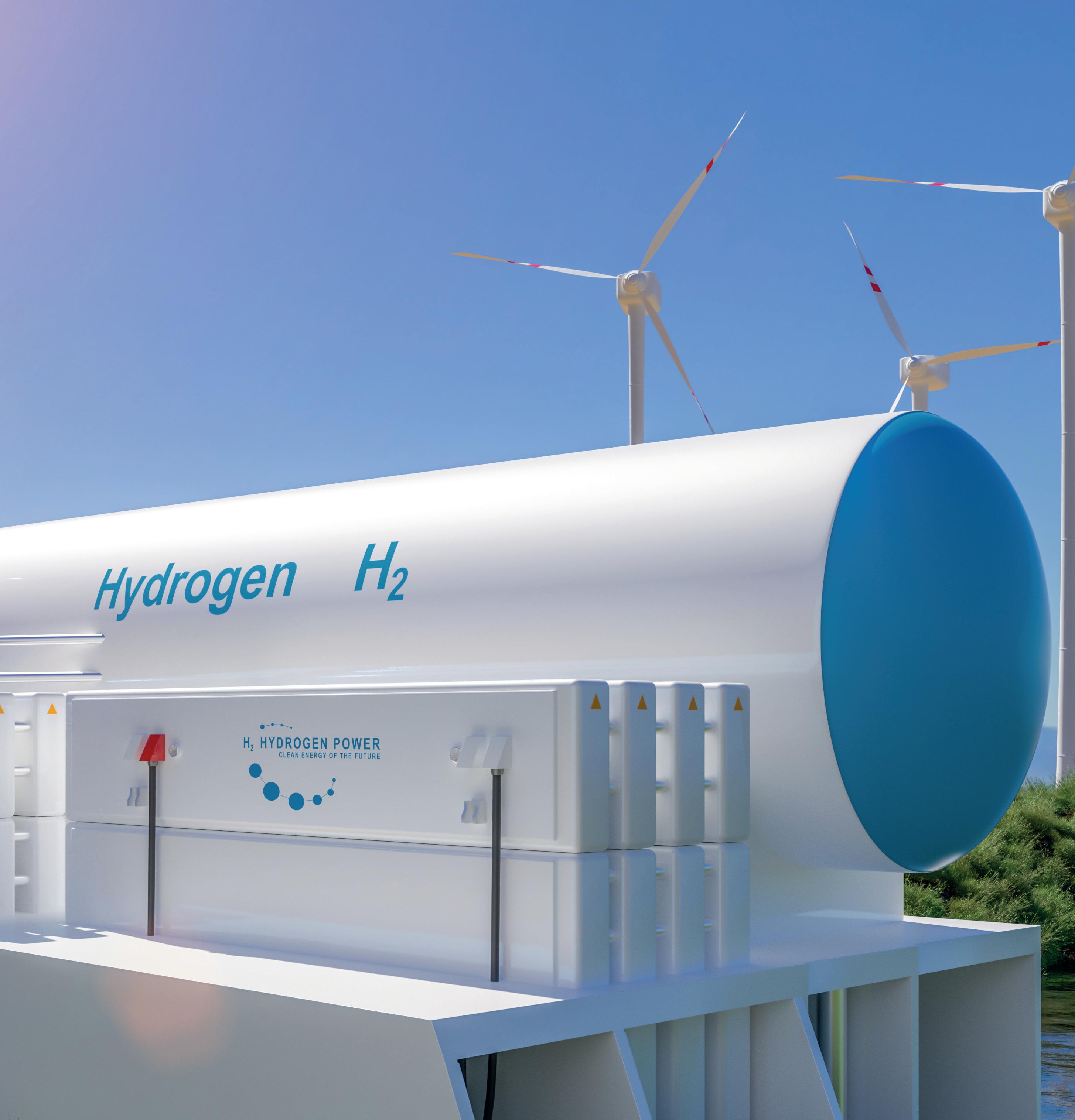
ECONOMY
49 MYTHBUSTERS
Within the UK, we have made a strong, early start to capitalise on our natural advantages. ”
“
EU agrees compromise on nuclear energy amid French pressure
Negotiators from member states and the European parliament agreed to increase the overall binding target of renewable energy consumed in the EU to 42.5 per cent by 2030, up from 32 per cent, according to a statement. They also set an “indicative” target of reaching 45 per cent by the end of the decade.

France had pushed for nuclear energy to be included in countries’ efforts to reach those targets. But at the end of a long night of negotiations, the countries agreed on a more limited concession counting nuclear power towards the target for industry.
Nuclear-sceptic countries including Germany and Austria had argued against the inclusion of atomic power, saying that such a move would undermine efforts to expand solar, wind and other renewable sources of energy.
The agreement now includes counting “low-carbon” hydrogen generated with electricity from atomic power plants as part of separate targets for renewable hydrogen used by industry, which can be reduced by one-fifth under certain conditions.

The states would, however, still have to reach the overall renewables goal of 42.5 per cent, regardless of the discount in the industry sector.
French energy minister Agnès Pannier-Runacher said the agreement was an “important advance” in terms of giving nuclear power some recognition when devising goals to reduce emissions — a battle France has led for months, across a series of EU texts on energy goals, with mixed success.
“This is about recognising that the development of renewable energy in Europe is aimed at eliminating fossil fuels and should not lead to the replacement of nuclear reactors,” she told reporters.
INSIGHT 50
The EU has reached a compromise on new targets for renewable energy after agreeing to make an exception for nuclear power in certain sectors amid pressure from France.
51 INSIGHT
She added that the French efforts were aimed at giving a “voice in Europe to all the member states who consider that nuclear power will help us leave fossil fuels behind”.
The new goals still mean France will have to play catch-up on rolling out renewable energy production. In 2020 it was the only country to fall short of its EU-set target, which in France’s case was for 23 per cent of renewable energy consumption to come from renewable sources. It came in at 19.1 per cent.
France has long been Europe’s nuclear power champion, deriving at least two-thirds of its electricity from atomic plants last year even as a record number of outages at reactors caused output to drop. It is planning for at least six new reactors, which it aims to build by 2035, and has led a push for nuclear, a low carbon form of energy, to be recognised more widely in decarbonisation goals.

The new law also accelerates permitting procedures for wind farms, solar panels and other renewable energy projects. They would be considered in the “overriding public interest”, meaning they could be exempt from certain nature protection laws.
“It will mean a massive boost for renewable energies in Europe,” said Markus Pieper, who led the negotiations for the European parliament on the directive. European Commission president Ursula von der Leyen said the deal “will help us progress towards climate neutrality, strengthen our energy security and boost our competitiveness — all at once”.

”
This is about recognising that the development of renewable energy in Europe is aimed at eliminating fossil fuels and should not lead to the replacement of nuclear reactors.
“




COMING IN SEPTEMBER



































































































































